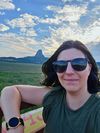Favorite national park? We might finally have our answer...
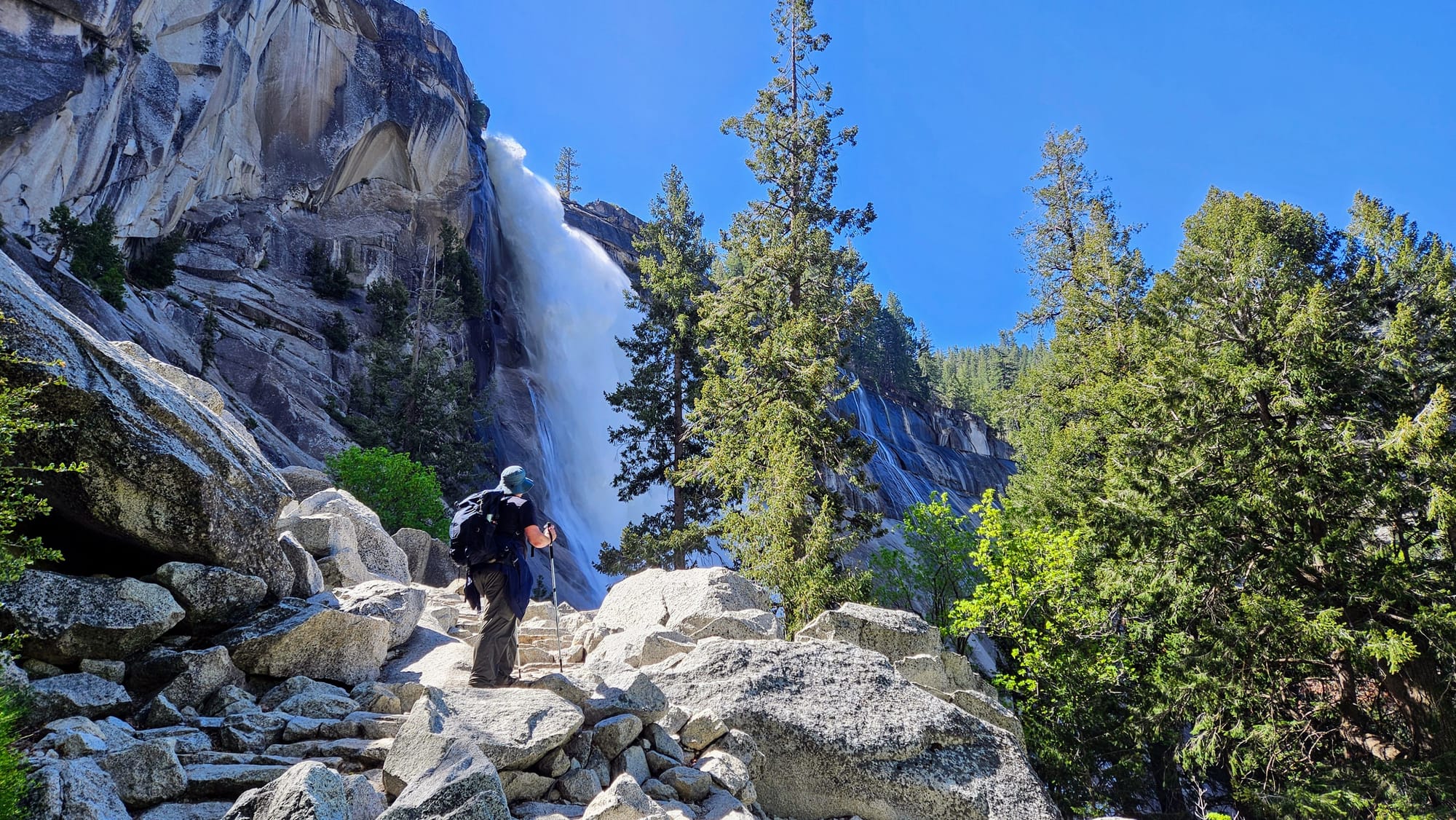
We often hear advice for full-time RVers to have some goals or a plan to help narrow down our travels. The United States is big, and we can't expect to see everything, nor would we necessarily want to. It's best to decide what we're passionate about, so we can plan our travels around those things. Some people choose nature-focused locations, like waterfalls or off-road trails. Some choose museums, like antique cars or sports memorabilia. The idea is to make RV life your own, keep it manageable, but always have something to get excited about as you move along.
When we first launched on the road, we didn't heed this advice. We were more driven by weather, namely our pressure to head south to get out of blizzard territory for the winter. Otherwise, if a place looked nice, we would consider going. Over the years, we learned what "nice" means to us. We love pretty places, but prefer natural beauty over manmade (except for dams. Dams are awesome). On the complete opposite end of the spectrum, we love kitschy roadside attractions and unique locations, the ones someone might miss if they're traveling by air. In time, we formed a natural progression of RV life passions, and one of those became visiting National Parks. We capitalize the "N" and "P" because, although we've been to some incredible national park sites, we'd find it overwhelming to try and hit all 433 of them. The officially designated National Parks (capital "N," capital "P") seem more doable because there are only 63, and for the most part, they're considered the cream of the crop. We have varying opinions on this, but we can't deny how much we enjoy seeing what each park has to offer, and what makes it unique from the other ones we've visited.
We started full-time RV life having only visited 4 of the 63 National Parks. We had barely considered forming a goal to hit them all, and even now, it's not a goal we're super motivated to achieve. However, the more we visit, the more we realize how much we love them, and having been to 36 at the time of writing this post, we think setting out to see them all could be a fun bucket list item. Something about these natural progressions that have shaped our travels is really wonderful. We didn't pressure ourselves to check off a list of destinations. We just planned our routes and took advantage of each location's most appealing draws. National Parks just happened to become very appealing.
Looking back, we raise our eyebrows at a few places we RVed that were so close to national parks, but we didn't go. That just shows how our priorities have changed. And, in the interest of those changes, we have visited 12 National Parks so far this year, including the one we'll be discussing today. What's more remarkable about this, is that we hadn't planned most of this year's visits! We just stuck them in as we rolled along. The exception to this, of course, was the Utah Mighty 5, which was the "big dot" on our itinerary for this year.
In some ways, the lack of planning made our visits all the more exciting. When we arrived to Carlsbad Caverns, our first National Park of the year, we commended ourselves on a successful and timely blitz west, which allowed us a gap of time to see Carlsbad and its adjacent park, Guadalupe Mountains. Then, when we hit Sequoia and Kings Canyon at the beginning of May, we made several remarks that we couldn't believe we were actually there! These parks seemed like pipe dreams, and they took a bit of extra effort to ensure we'd actually get there.
One park, though, was the definition of a pipe dream: Yosemite. At some point, we got it in our heads that we wanted to see this park this year, even though it wasn't anywhere near anything else we had planned. We hadn't looked much beyond the end of our Utah Redemption Tour, because after that, we weren't sure if we would even wanted to continue on the road at all. Even still, I booked a site in Stanislaus National Forest, near Yosemite's north entrance. Let's paint a little picture of where our heads were during the day I made the reservation. It was January 31, and we were at Poverty Point Reservoir in Louisiana, the first stop that definitively proved that we were in fact headed west this year. Despite not knowing what the future held after Utah, I knew that Yosemite would need to be planned ahead of time if we wanted to grab a spot close to the park boundaries. Campgrounds within the park weren't taking reservations, and even if they were, they're tight squeezes for a rig our size. Private RV parks in the area are slim pickings and not well rated. One national forest campground, Sweetwater, had sites available. It also didn't have the best reviews, but looking more closely, most people were just complaining about it being dry camping only (why do people continue to knock points off for something that's obvious and expected?!) and doesn't have a lot of trees, due to a recent wildfire. Definitely not dealbreakers for us, and so I booked us a week at Sweetwater Campground, knowing full well that I might be cancelling it in just a matter of months. The good thing about rec.gov reservations is that their cancellation policies are reasonably flexible.
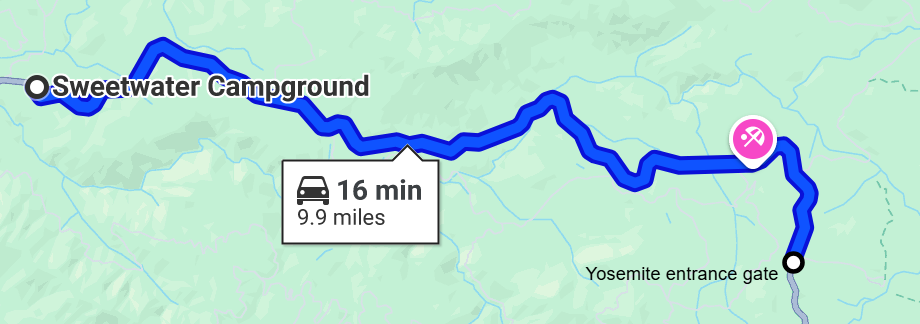
How did I choose the dates for our stay that might not happen? I took two factors into consideration. 1, I roughly estimated how much time we'd need to get from Zion to Yosemite, with some slow travel and stops in between. Two, I aimed to visit Yosemite in the spring because I had a long-standing dream to see the waterfalls at their most powerful and get pummeled by Vernal Falls on the Mist Trail. I booked from May 10-17, but this brought up a host of other potential issues. Booking in spring meant we ran the risk of rockfalls and mudslides blocking road access to the park. Thankfully, the Sierras didn't get as much snow this winter as is common, but they did have a huge storm in February that dumped 44 inches in parts of the Yosemite high country. We'd need to watch the road conditions closely. Speaking of which, we weren't sure which roads would be open by the time we arrived, as many are seasonal. This is the main reason I looked for campgrounds near the north entrance, on Route 120, as this road is open year-round. Lastly, Yosemite was in the spotlight as one of the parks most concerned about the government defunding of the NPS. The park held off making decisions about timed entry reservations, so we didn't know if we'd be scrambling to get timed entry at the last minute.
Add up all these far-too-likely roadblocks, plus our incredibly iffy travel plans, and we were sure something would keep us from visiting Yosemite this year. But then after our Utah Redemption Tour, we found our way to California. We regrouped by countering our Mighty 5 adventures with low-pressure stops at kitschy attractions. Then we found a nostalgia-filled morale boost in Paso Robles, one of our favorite towns in the state. After that, we felt ready to resume our national park visits. That's how we ended up at Sequoia and Kings Canyon unexpectedly. After that, Yosemite was on the calendar, and to our luck, no rockfalls or mudslides blocked our access, and the park finally announced their timed entry reservations. They wouldn't begin until the week after we left.
Our only remaining challenges would be on our drive day to Yosemite, on a route that would take us through mountain passes in the Sierras. Then, once we finally (and hopefully safely) got to our campsite, we weren't even sure we would fit! The campground was small, and there were no photos of any of the campsites, nor was there Street View. All I could do was go into satellite view on Google Maps, but it was almost impossible to tell which site was which. I needed to rely on the site dimensions listed on rec.gov, which were conflicting. A driveway length of 32ft wouldn't be enough for us, but a site length of 50ft would be. We didn't know what to expect.
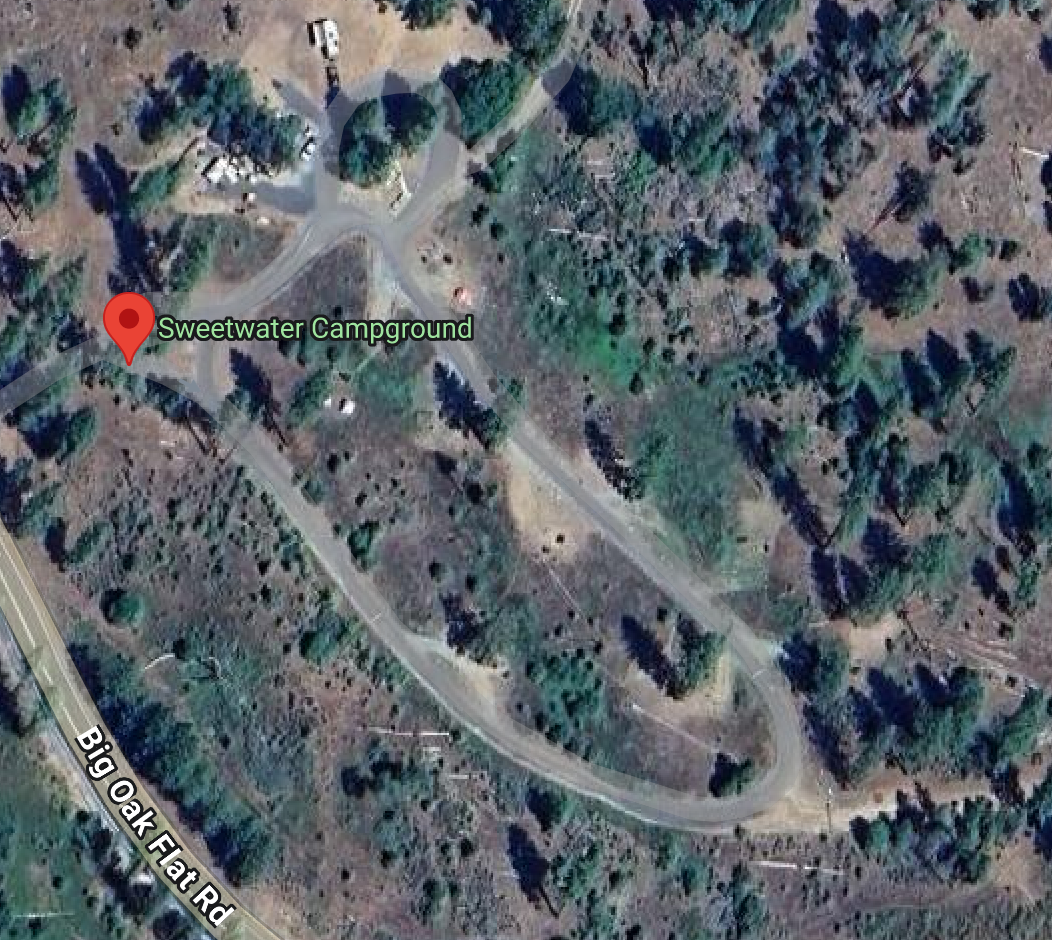
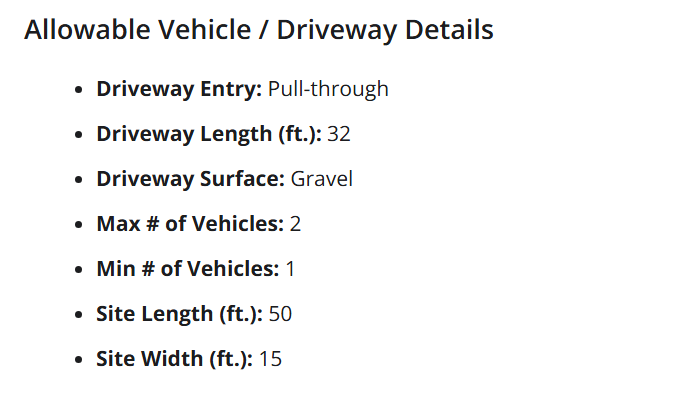
The drive was beautiful, but we definitely white knuckled it. We gained and lost thousands of feet in elevation multiple times, around tight curves on roads that warned long vehicles to consider seeking alternative routes.
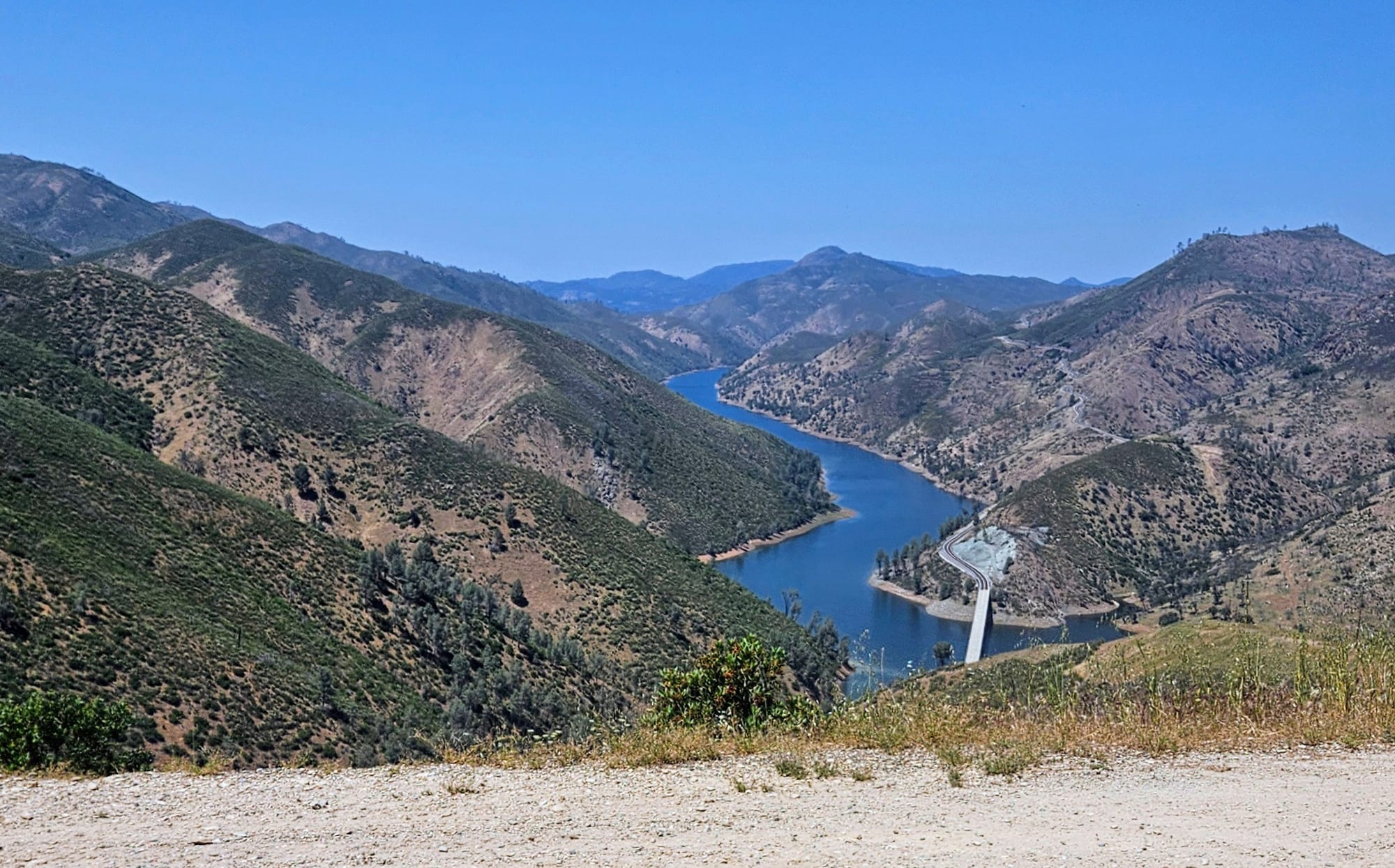
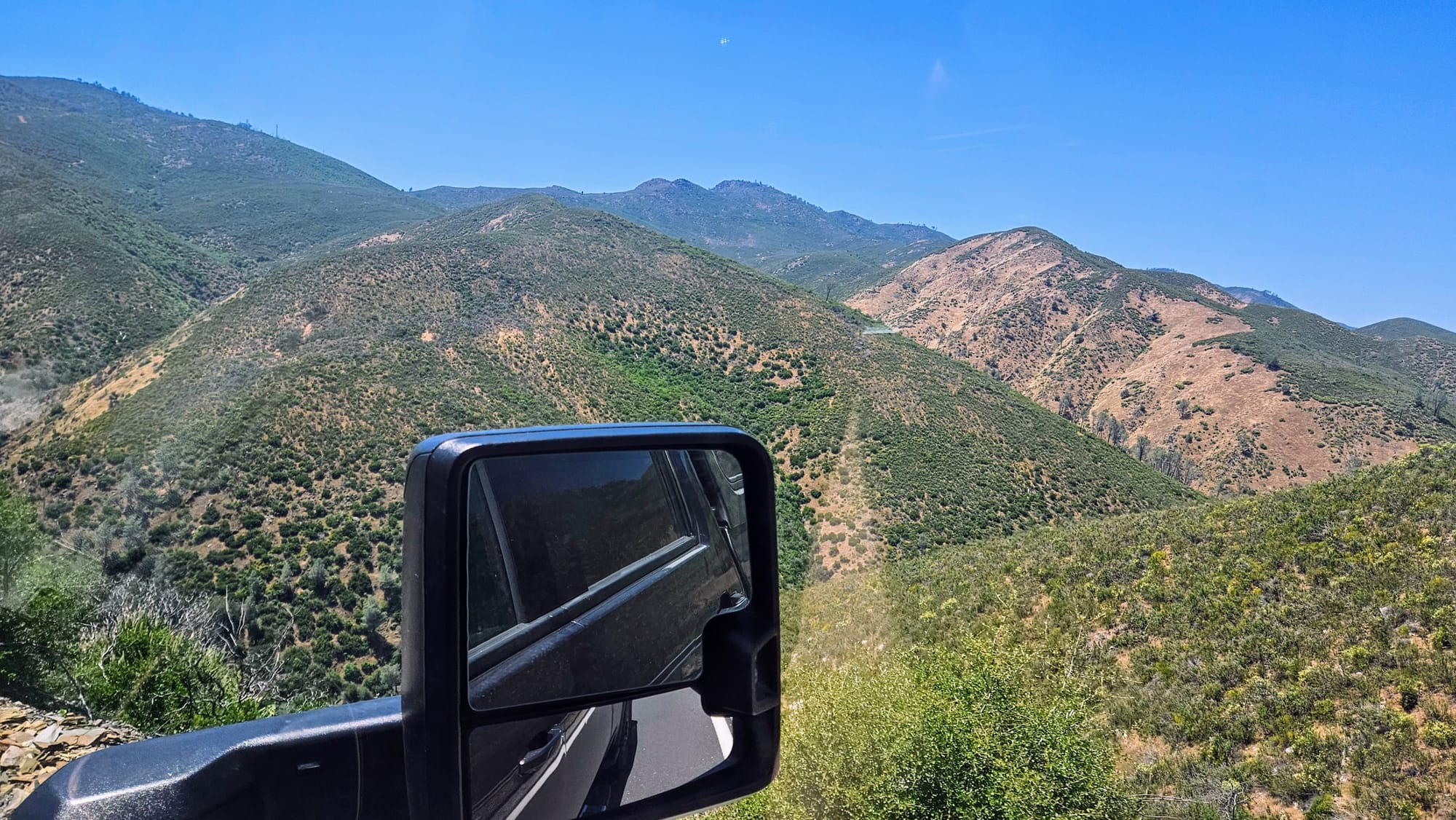
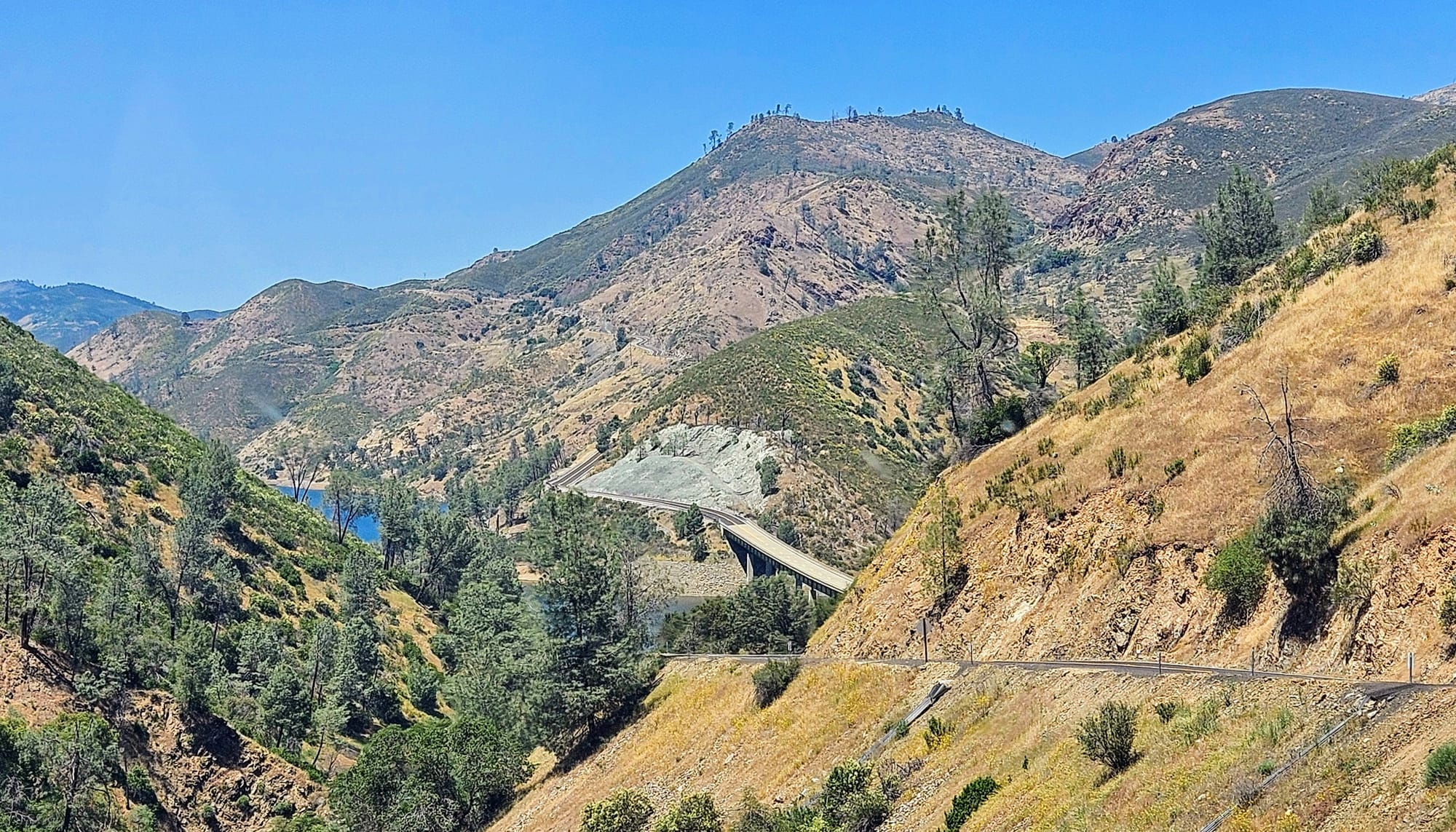
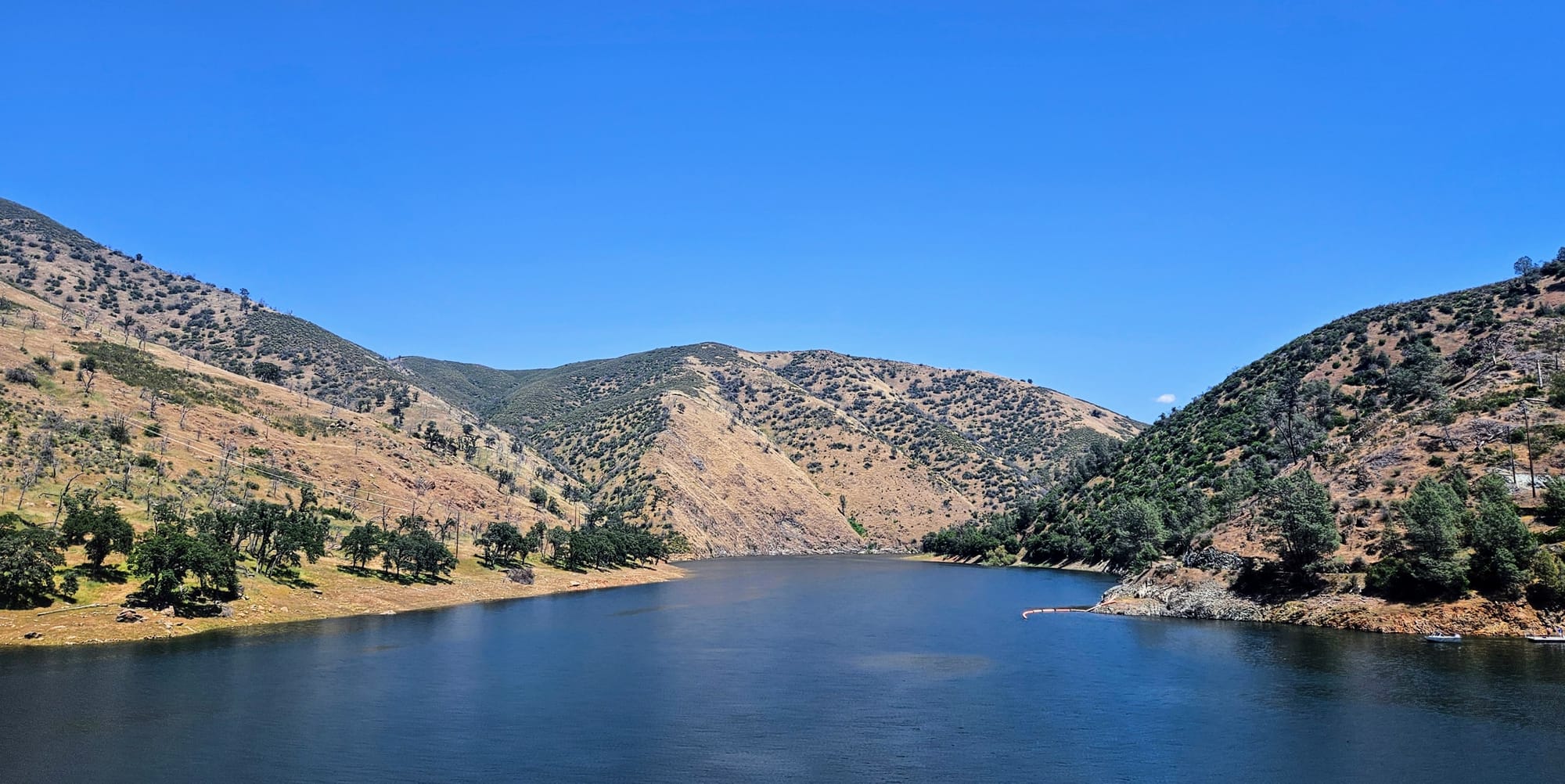
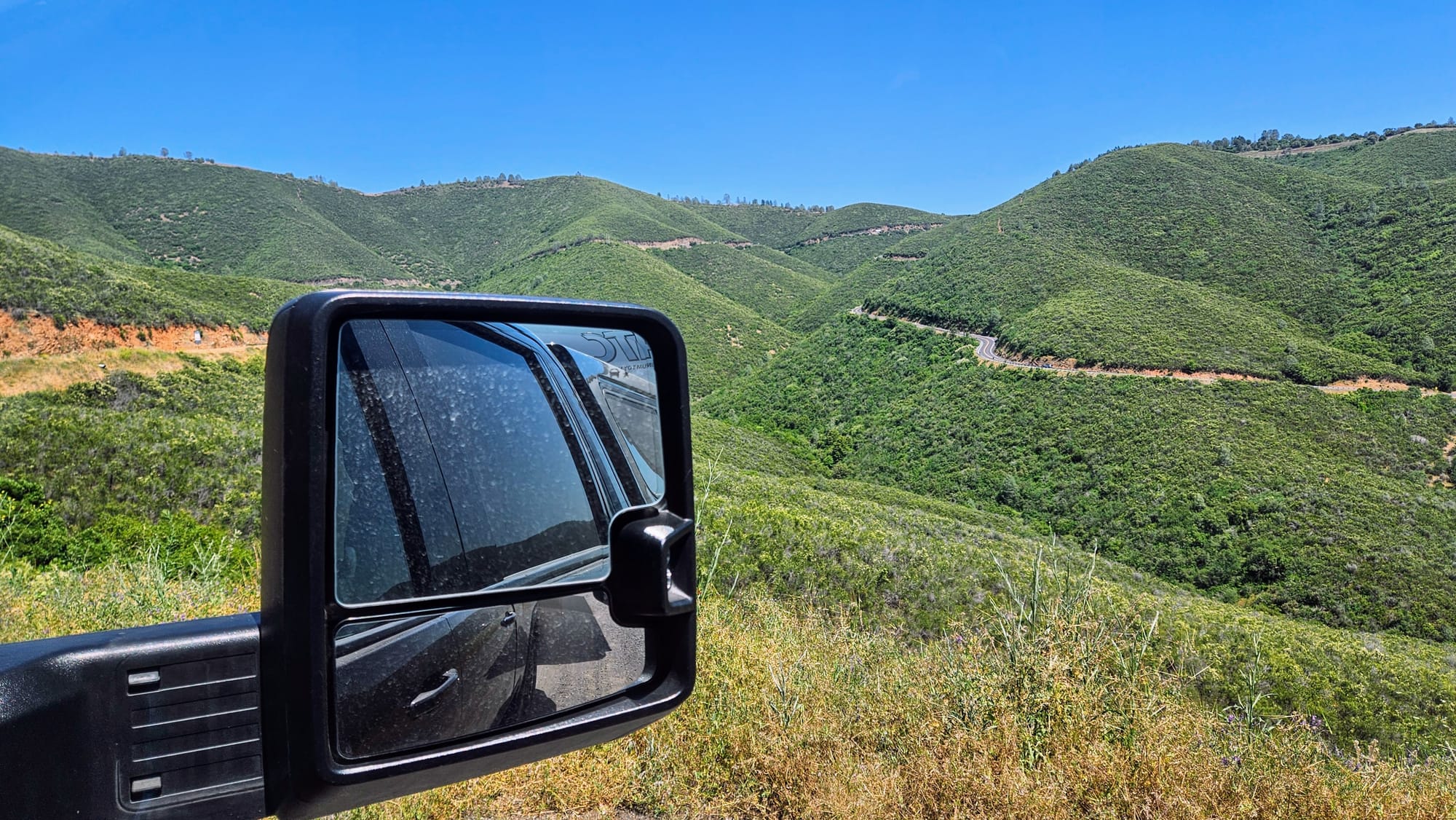
Turns out, our site stats were all kinds of wrong, but they worked in our favor. It was true that our site was a pull-thru, though the "gravel" had become grass and at first we couldn't even see where our site started and ended. It was extremely unlevel and took the top spot away from Palo Duro Canyon on the most we've ever had to extend this tongue jack. The 15ft of width was a generous estimate, as our site had likely overgrown to become skinnier. Then we had boulders, posts, and a large tree that would make maneuvering a minefield. But on the bright side, our campsite itself was massive. Not only was our parking area long - way longer than the 50ft rec.gov claims is the whole site and not just the parking - but we had a whole separate area for our picnic table and fire ring about 30ft away! Plus a big, luscious forest as our pleasure-side view, unobstructed by neighbs, thanks to the configuration of our pull-thru.
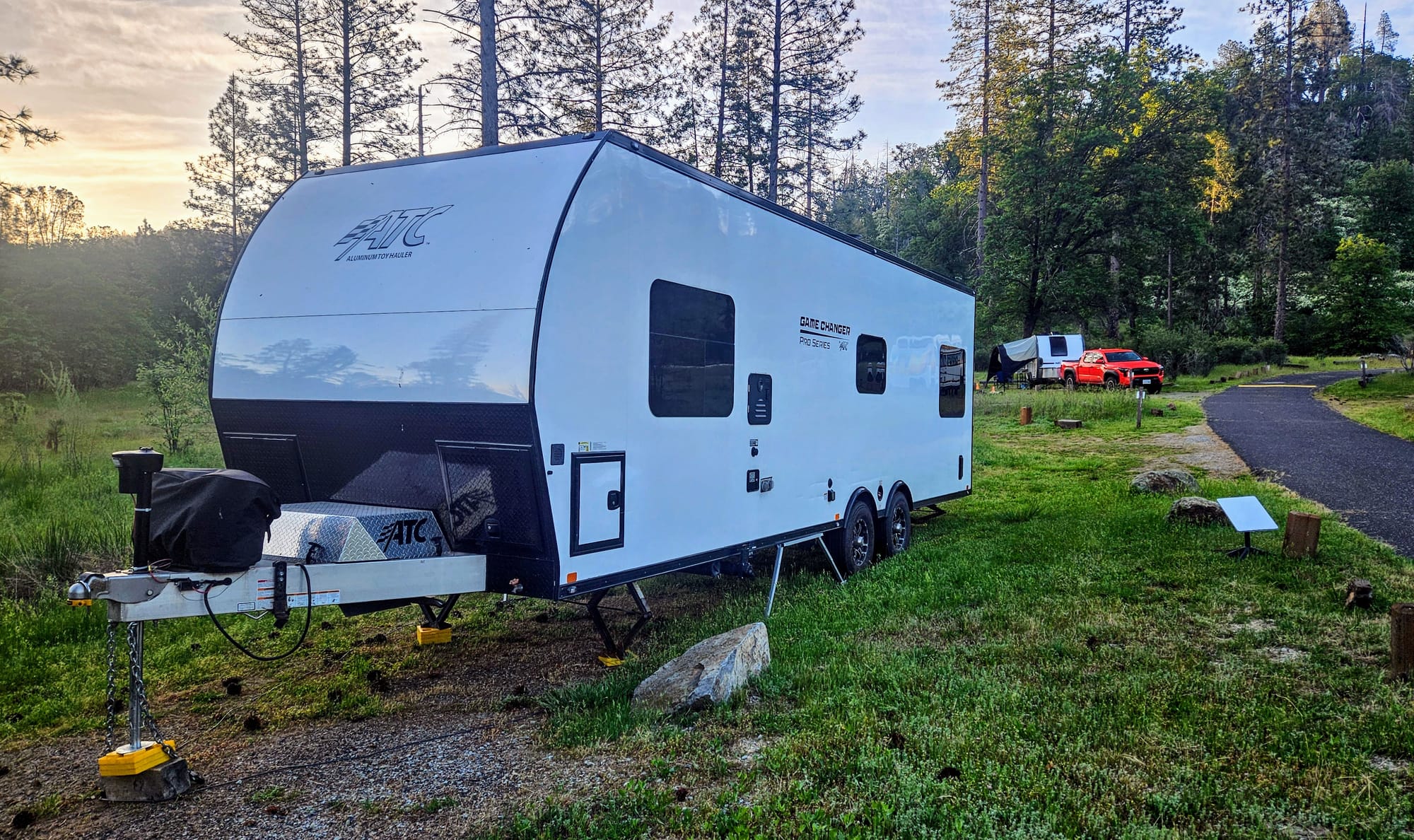

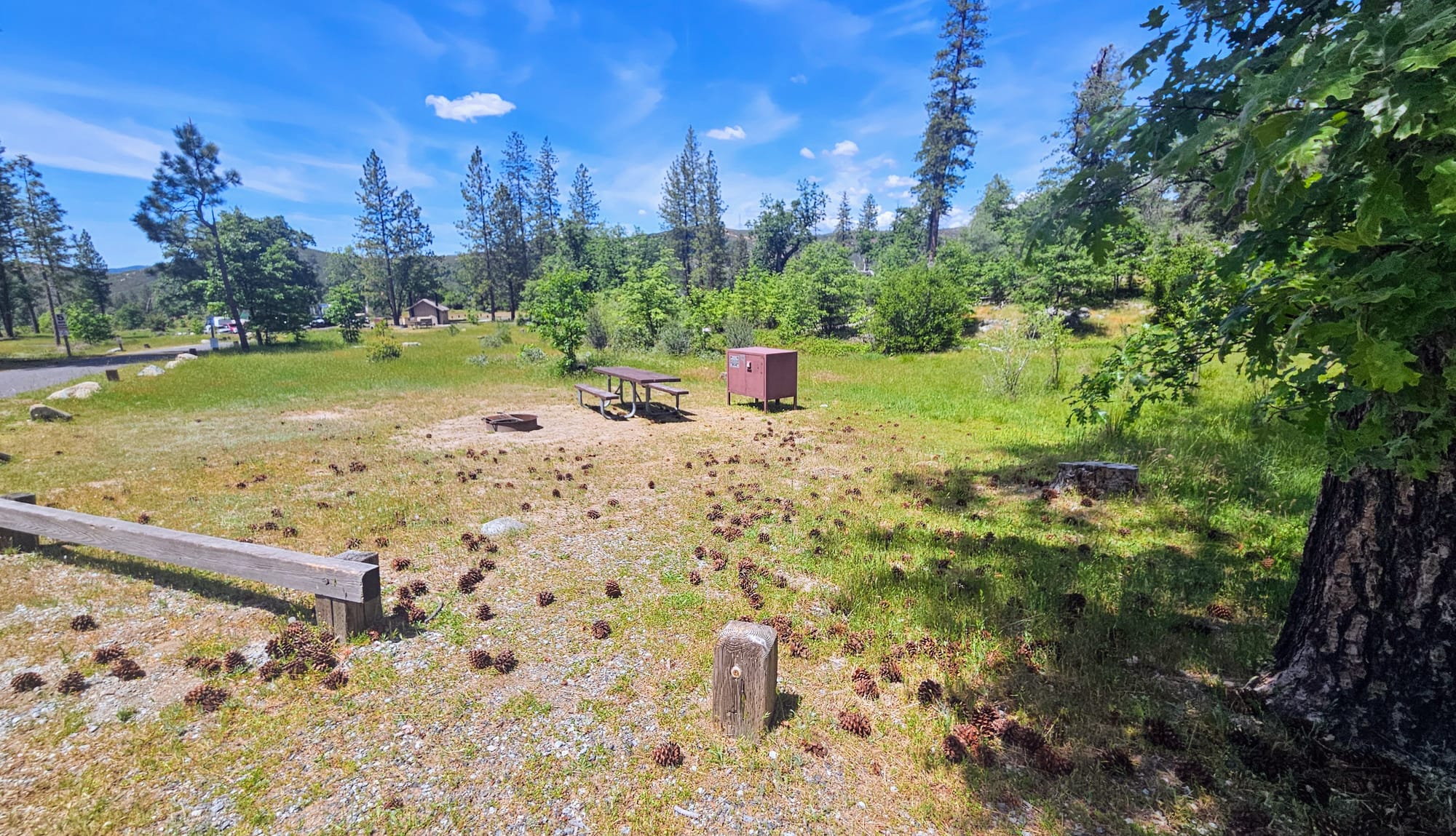
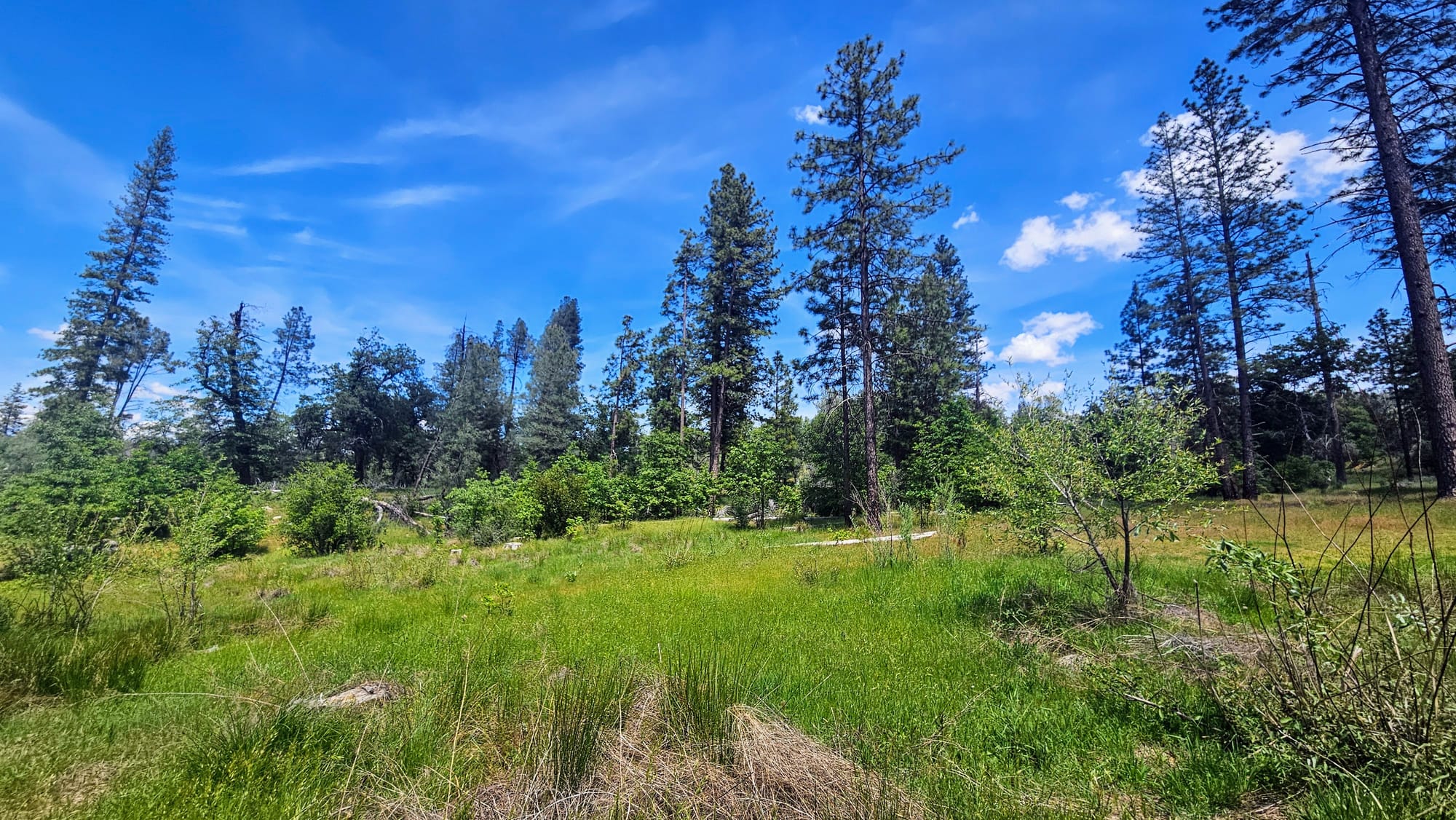
Maneuvering into the site wasn't fun, and we'd have to back out of there on our way out to avoid all the obstacles, but we never mind wonky sites, and a lot of the time the payoff is worth it, as it was here. This was the most peaceful camping experience we've had since Capitol Reef, and we desperately needed it.
Site 5, pull-thru, no hookups
Huge site, forest views, picnic table, fire ring
Campground recommended? Yes (for small to medium rigs)
Campsite recommended? Yes (for small to medium rigs that are able to level on large grades)
We had to pinch ourselves that we actually made it. We made hiking plans in Yosemite the next day. We were a bit worried that perhaps the park had reached dream levels beyond what reality could measure. So many people claim it as their favorite park. We put in a lot of effort and waded through a lot of uncertainty to get there. Were we putting Yosemite on a pedestal? We didn't want another repeat of Zion.
We decided to start Yosemite off with a bang. If I wanted to get pelted by Vernal Falls, we would make it happen! We planned to drive into Yosemite Valley and make our way to Happy Isles, where we would find the Vernal Falls Trailhead. If we were feeling extra adventurous, we'd tackle the 6.4mi loop up the Mist Trail past Vernal Falls, and then continue up to Nevada Falls, then circling back on the John Muir Trail. If we needed to shorten our hike for whatever reason, we could make a shorter loop after Vernal Falls and skip Nevada.
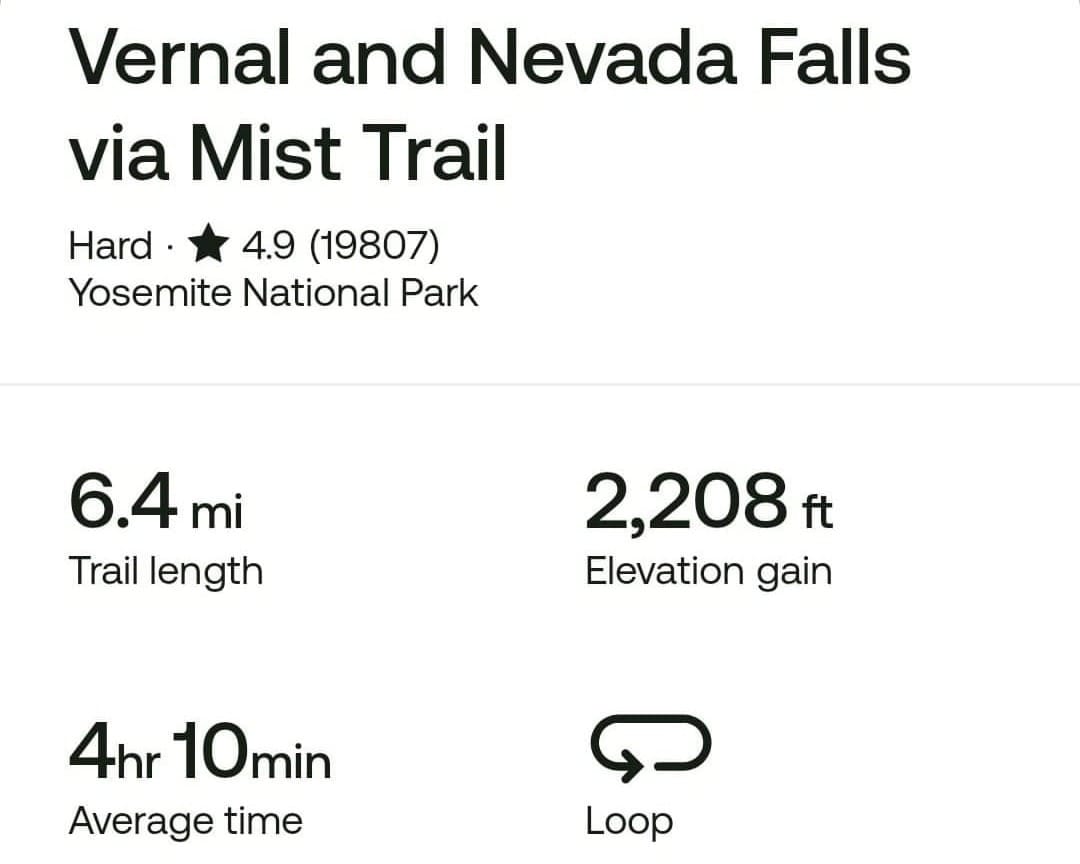
I was stressed. Just like all the potential obstacles in our way of even getting to Yosemite, a lot needed to happen in order for us to even do the hike. We needed to prepare to get wet. This meant packing changes of clothes and putting items in Ziploc bags. Parking isn't available at the trailhead, so we'd need to find a lot and then either walk or shuttle to the trailhead. This would be on top of the hour+ drive into Yosemite Valley. We may be staying close to the park entrance, but Yosemite is 1200 square miles! To get from one place to the next requires time. This meant we wanted to start early to beat the crowds, so a pre-dawn wakeup was in order. Then, we'd need to make good time on the hike so we wouldn't be leaving Tanner too long. The hike's stats put it in the top most difficult hikes we've ever done, with 2000ft of gain in the first half of the hike, plus another couple hundred on the back-half of the loop. Then factor in the wet terrain, and we were in for quite the endeavor.
Only, as soon as we entered the park and approached the Valley, all our stress dissipated. This park was stunning. The Merced River was flowing with its springtime vigor. Equally powerful waterfalls ran over the granite cliffs. The landscape magnificently offered us both mightiness and serenity. We only needed to drive a handful of miles before Anthony asked, "Are we finally going to have an answer for our favorite National Park?"
That's the question so many people want to know when they hear about how many parks we've visited, and we always respond that we can't answer. Most people can't. Even Google AI says that "opinions on national parks are subjective, and one isn't better than the other." (We do, however, always joke that we can't list our favorite, but we can list our least favorite! Sorry, Cuyahoga Valley). But Yosemite hit us like a ton of bricks. Perhaps something deep down was telling us to go, that this might be the destination that makes Season 4 really click for us.

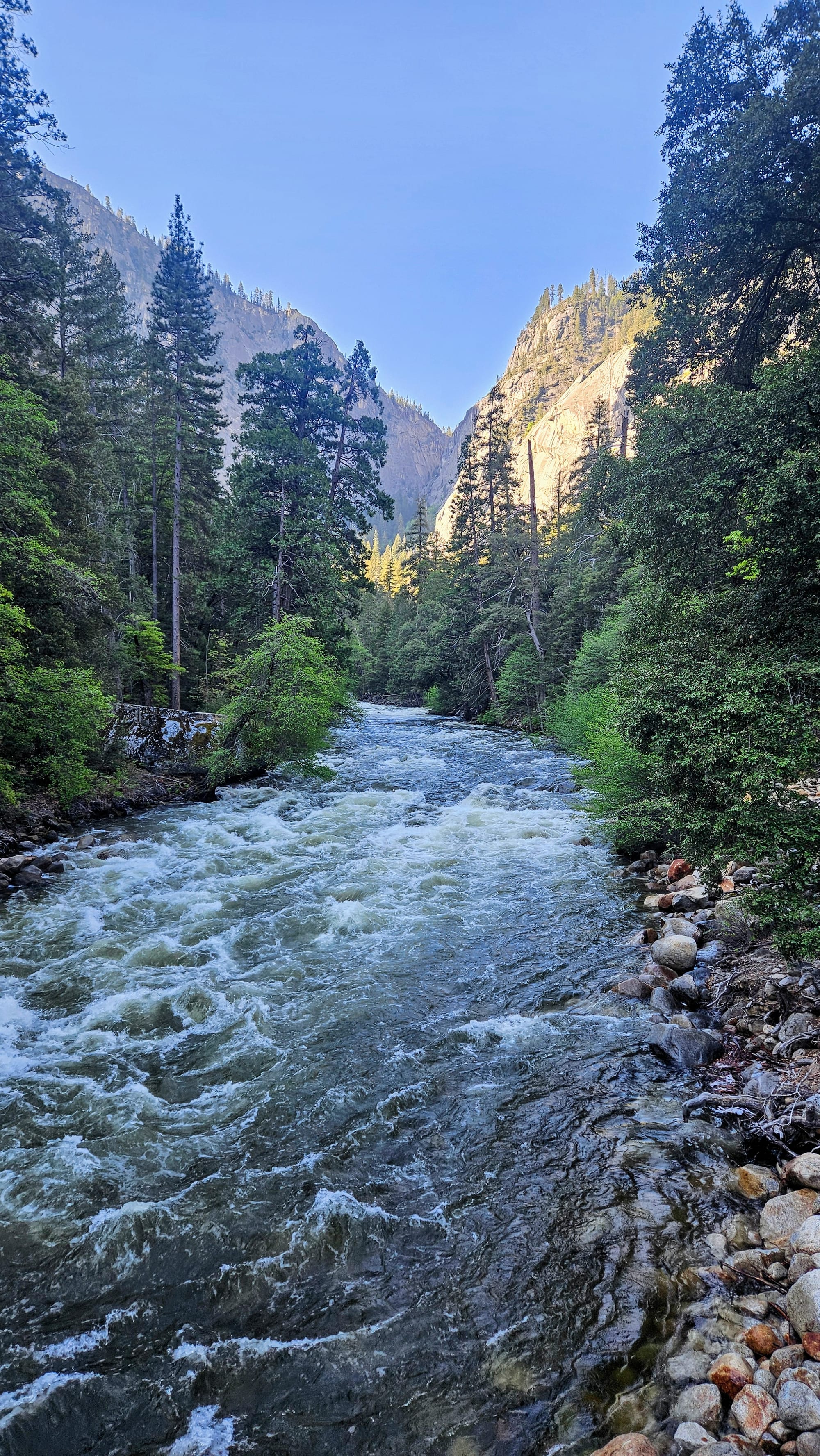
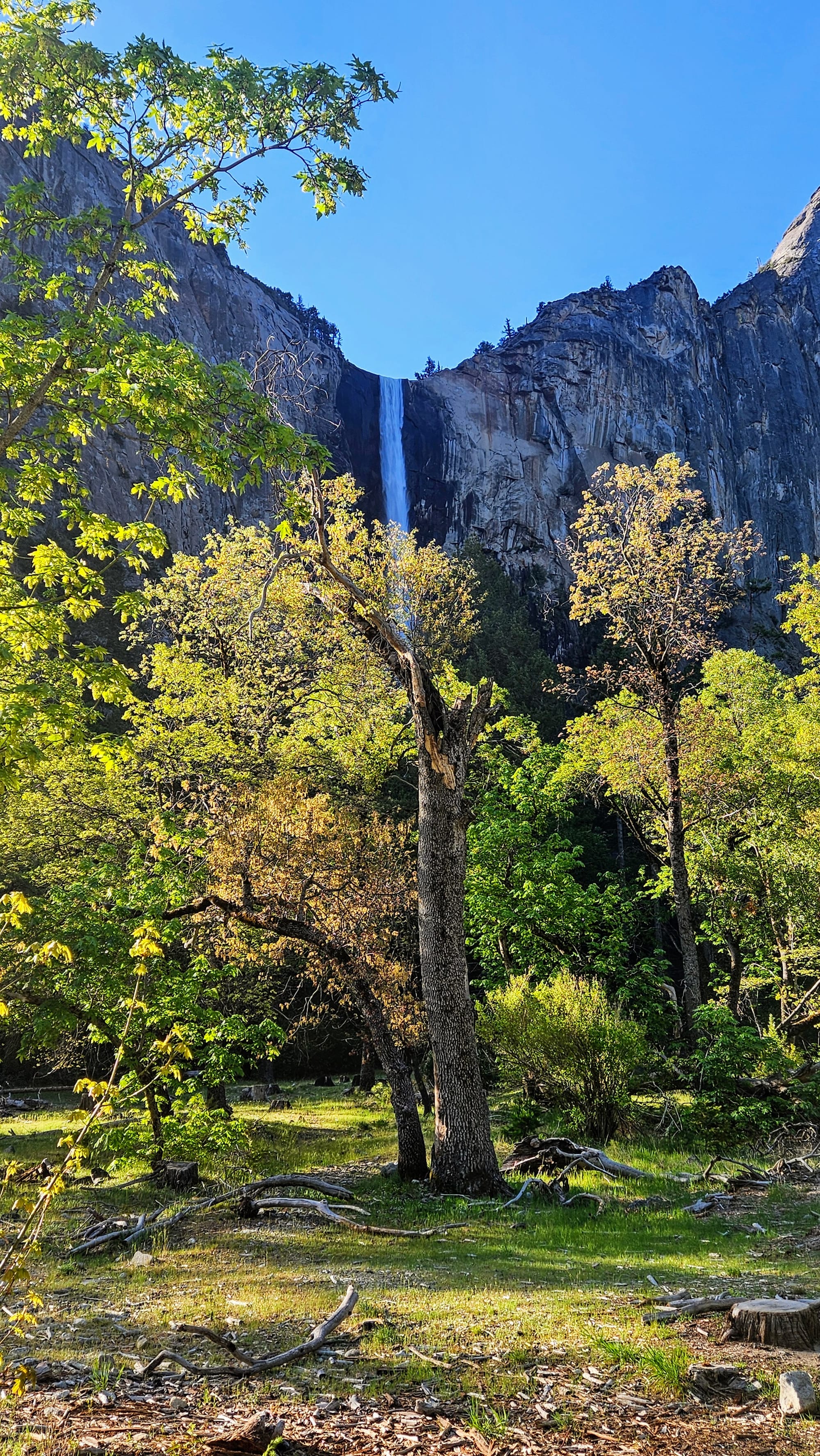
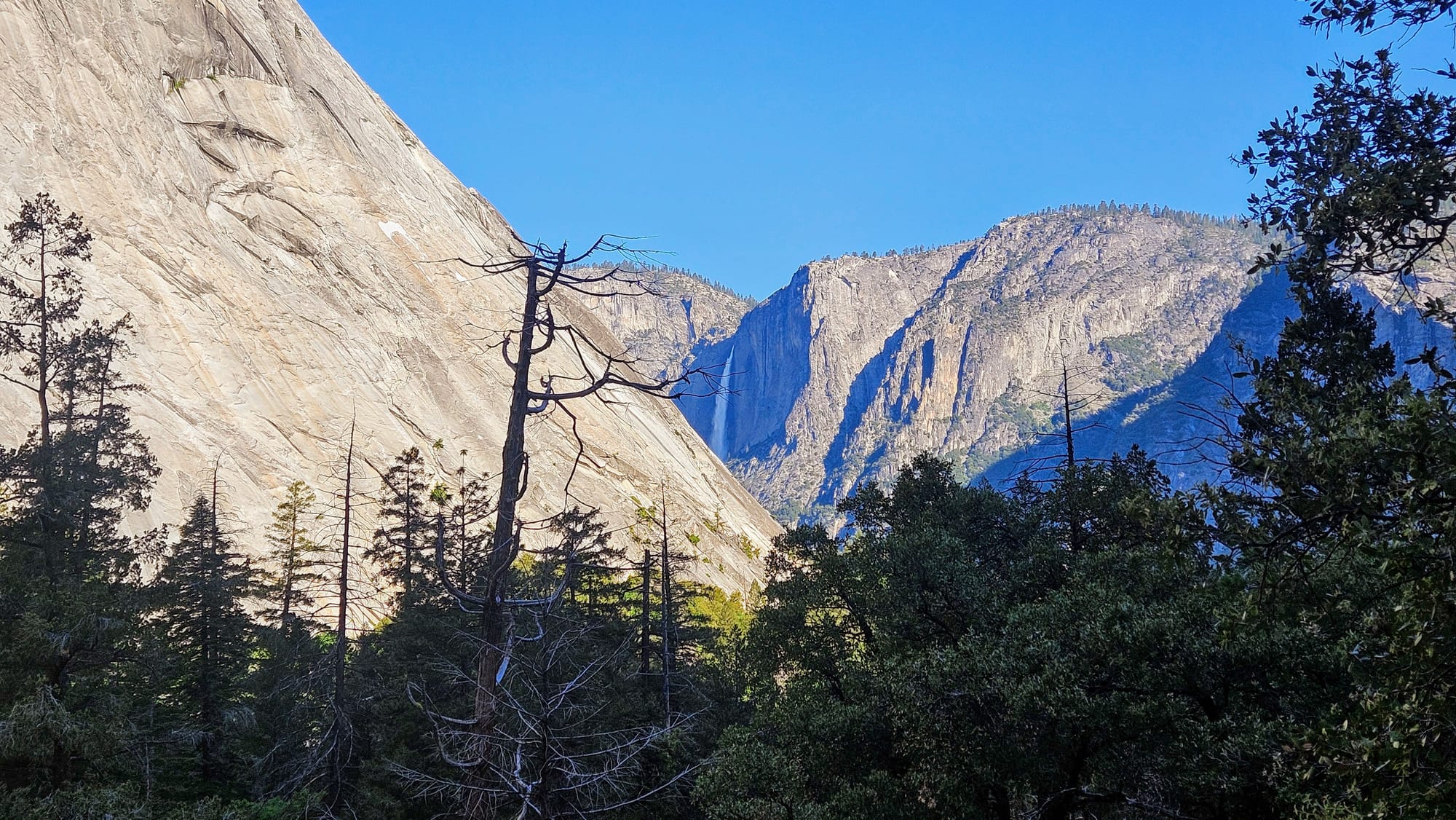
A drive through the valley and shuttle bus ride later, we had arrived to the trailhead. Time to prove that all our Mighty 5 and Sequoia/Kings Canyon hikes built up our stamina! The beginning of the trail is paved and leads to the Vernal Falls Bridge, the first view of the waterfall and a place where many decide to turn around. It's steep right from the get-go, but we were moving on pure vigor and desire. All I could think about was the next part of the trail and finally living my dream of taking that Vernal Falls shower.
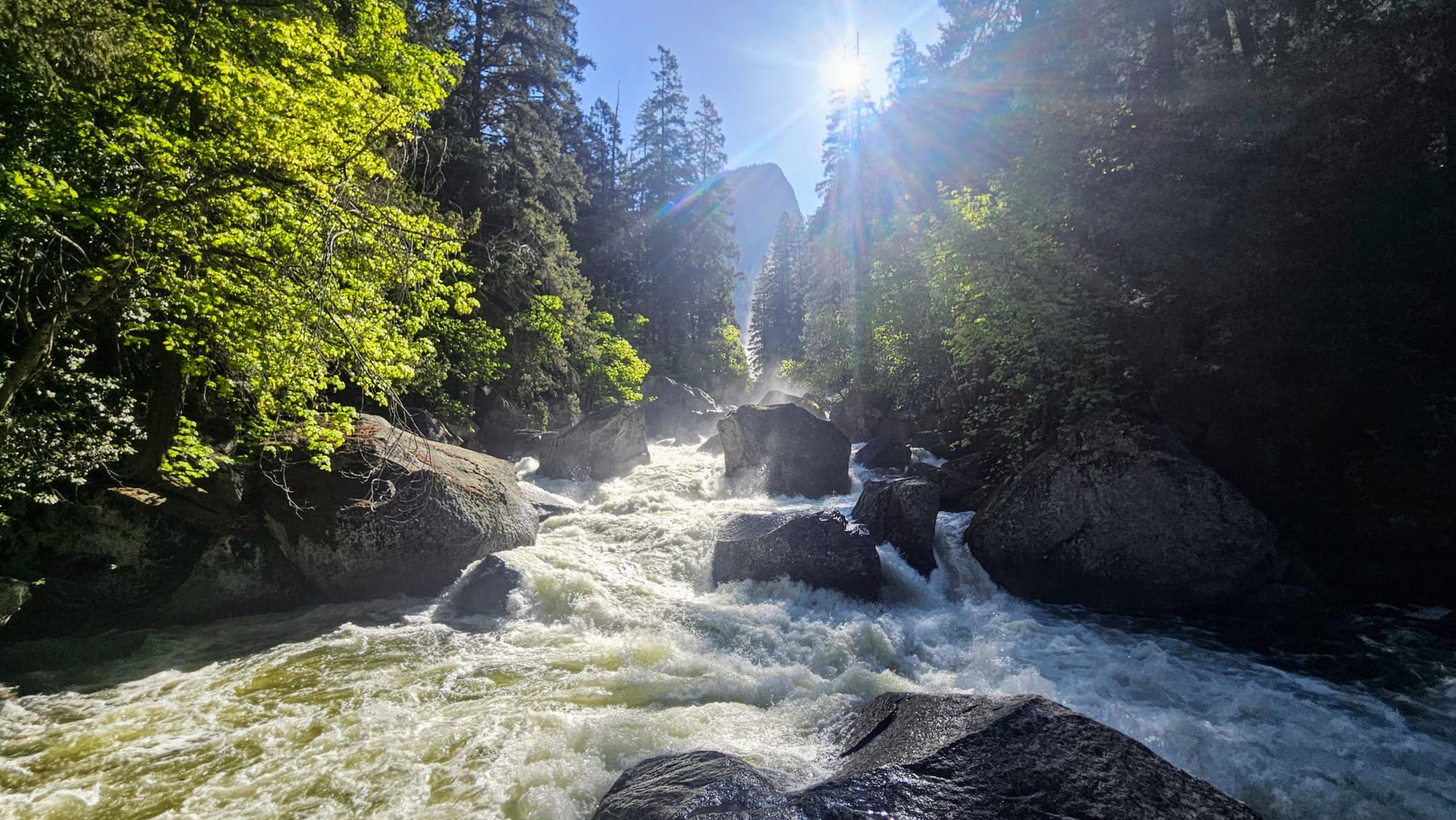
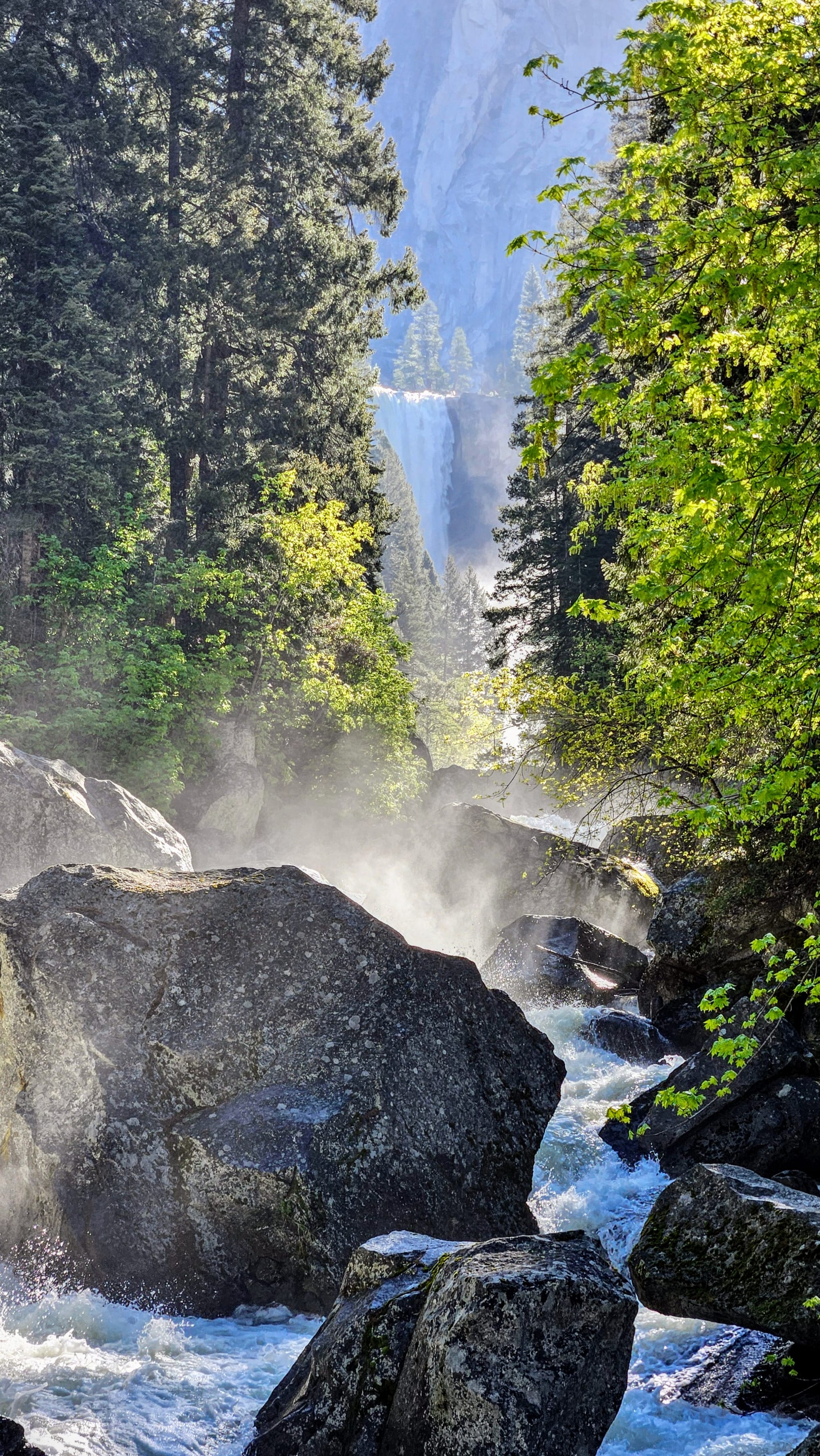
The Mist Trail is often described as nature's Stairmaster, because the entire trail is a big climb of granite steps that seem to go on forever. It's a workout and a half, but during the first part, we barely noticed our exertion because we were having way too much fun getting drenched, seeing the sun reflect in the mist, viewing the falls, and spotting rainbows.
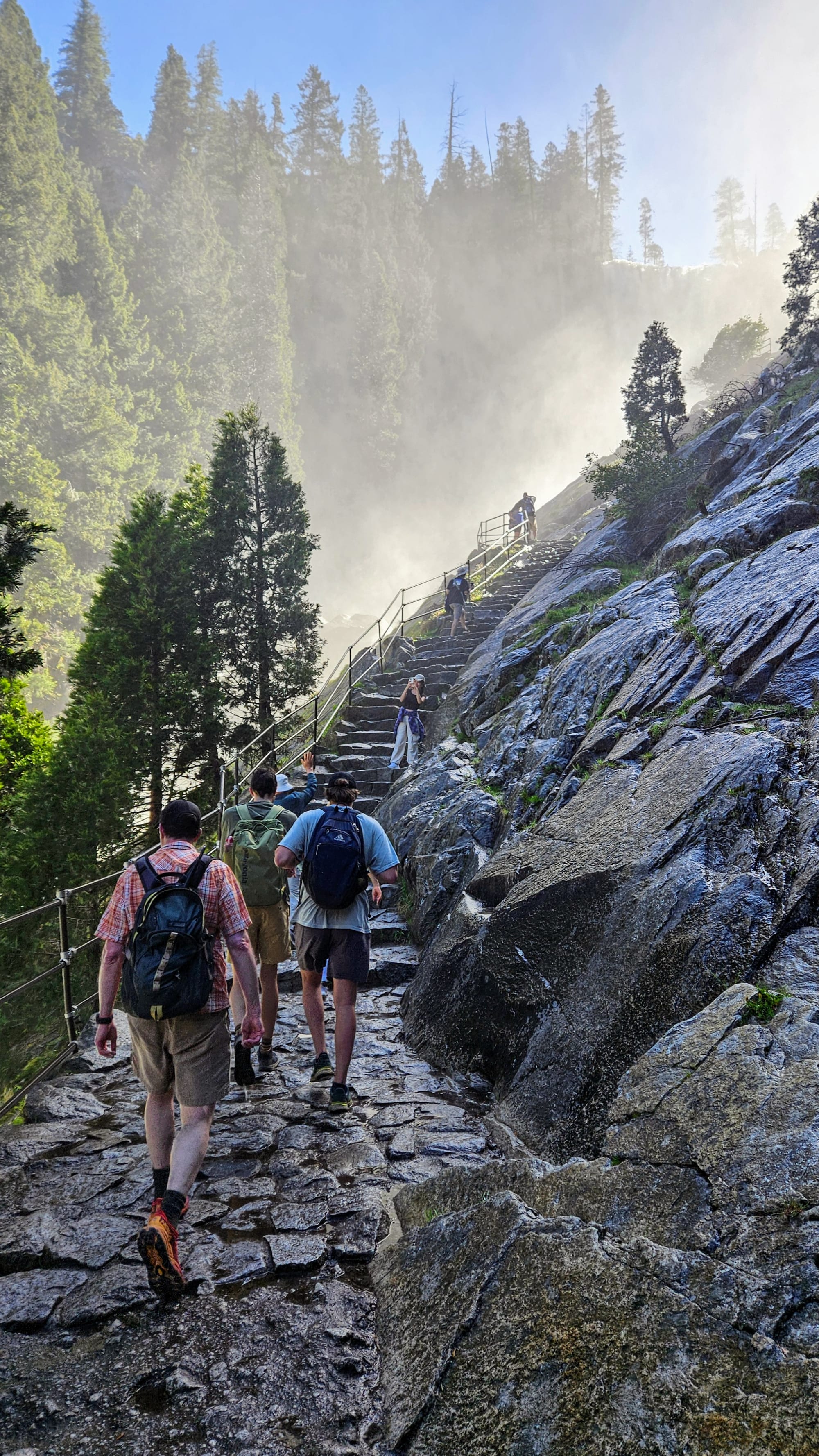
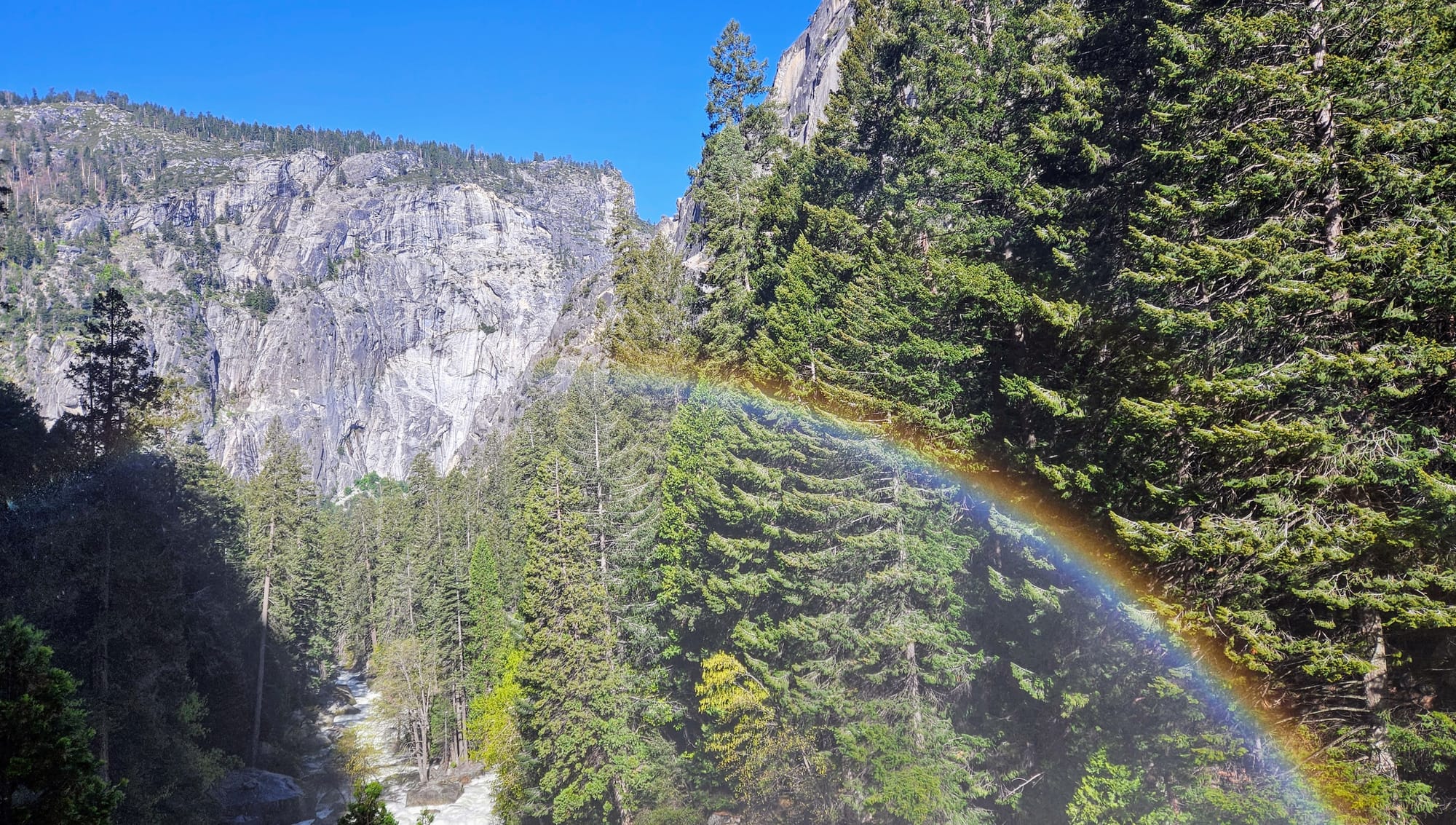
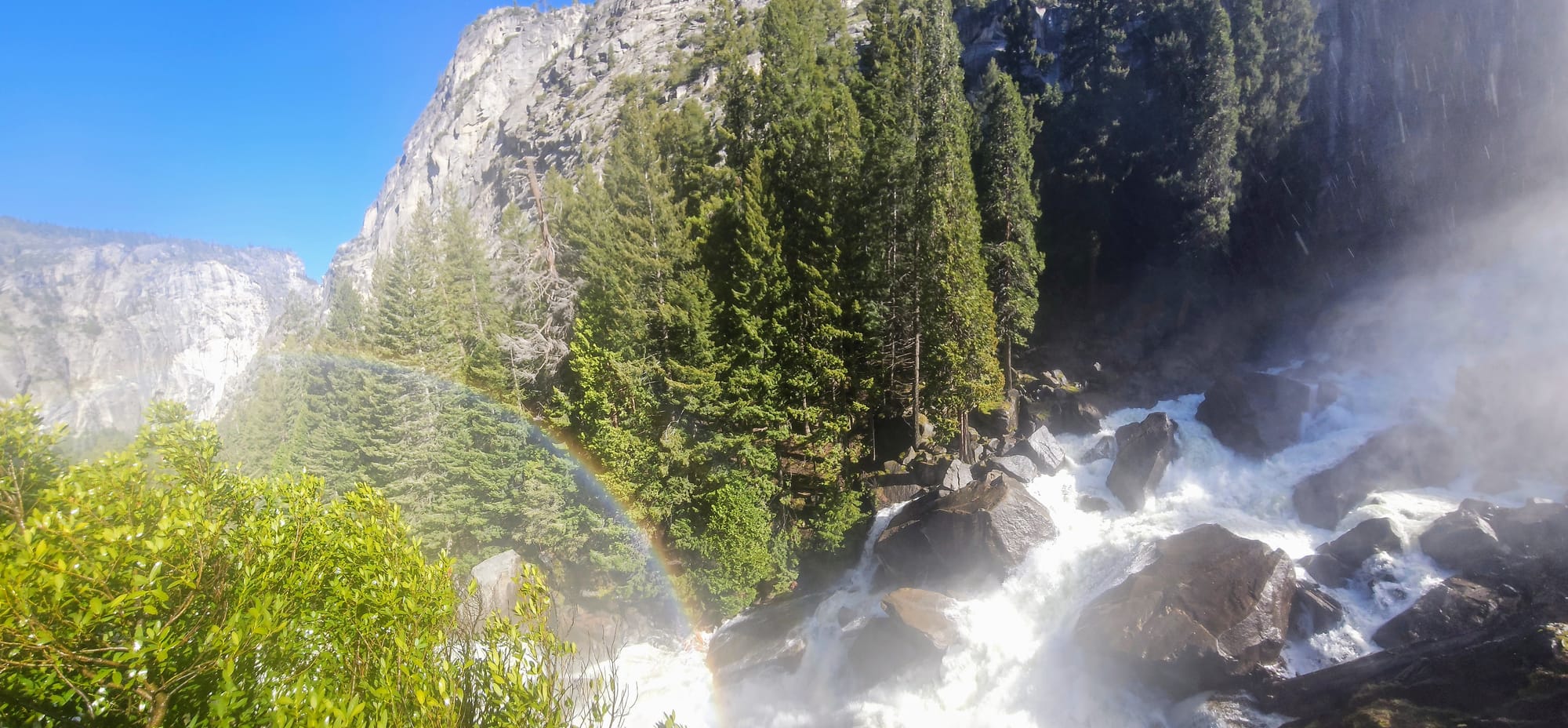
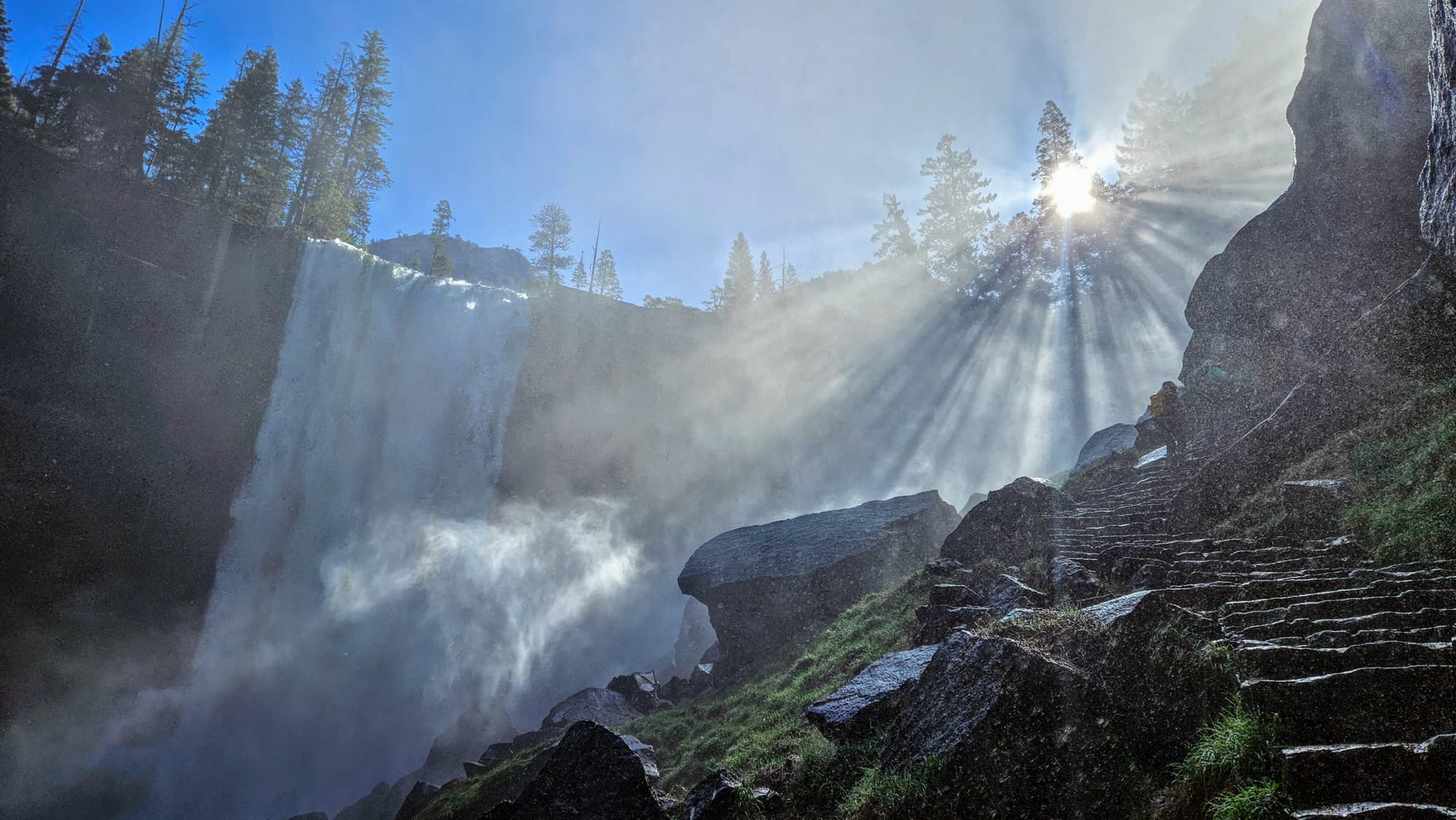

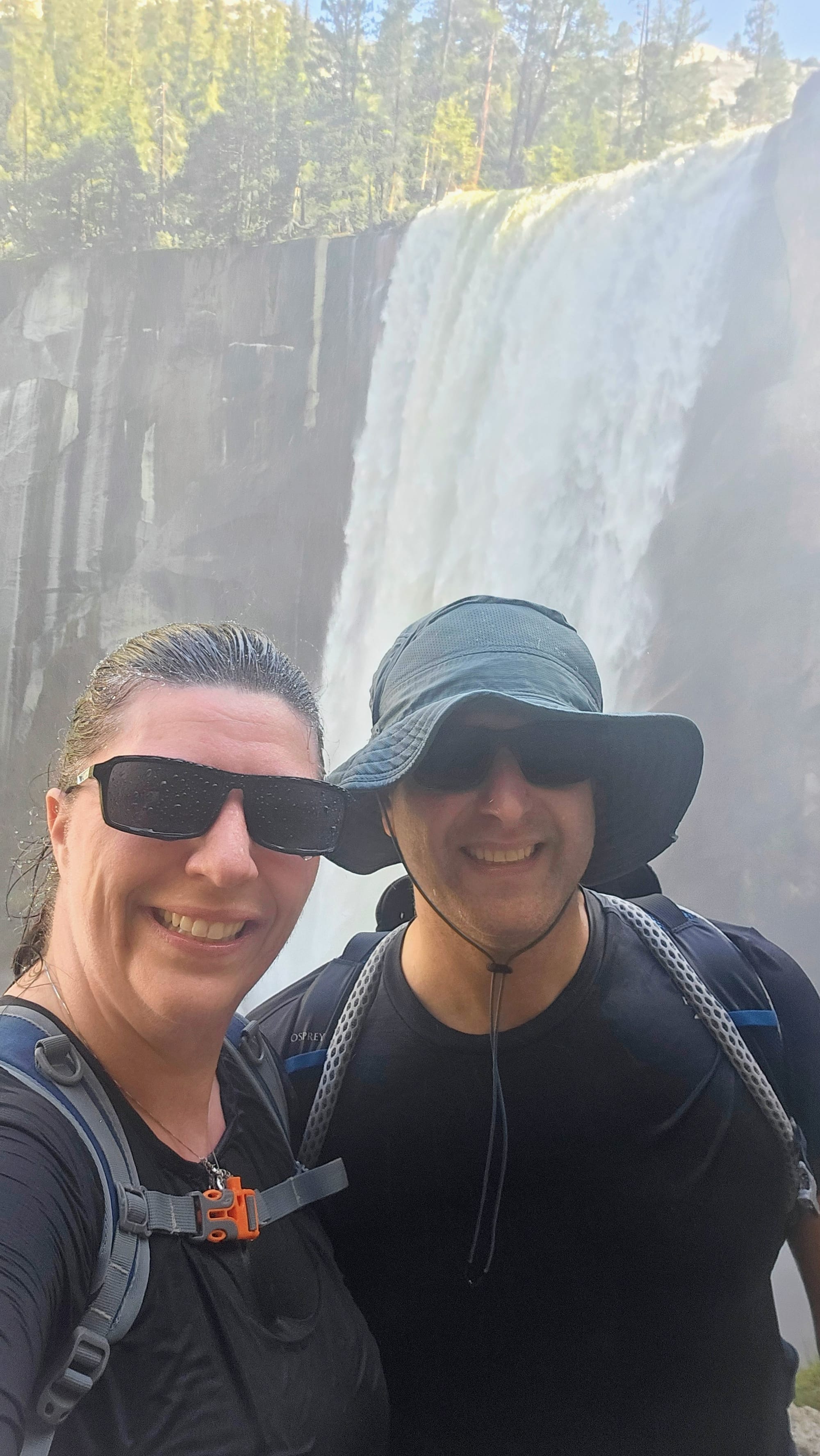
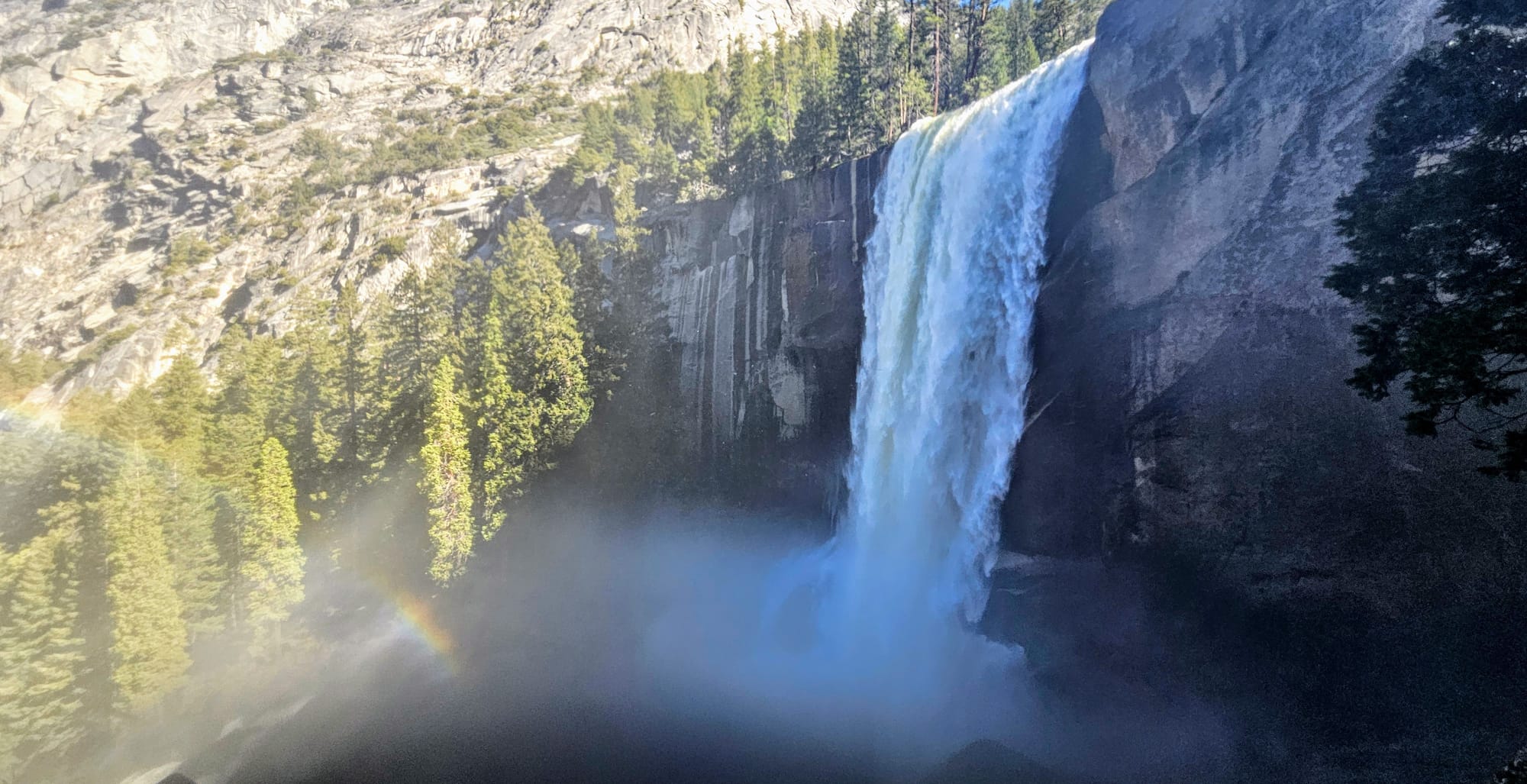
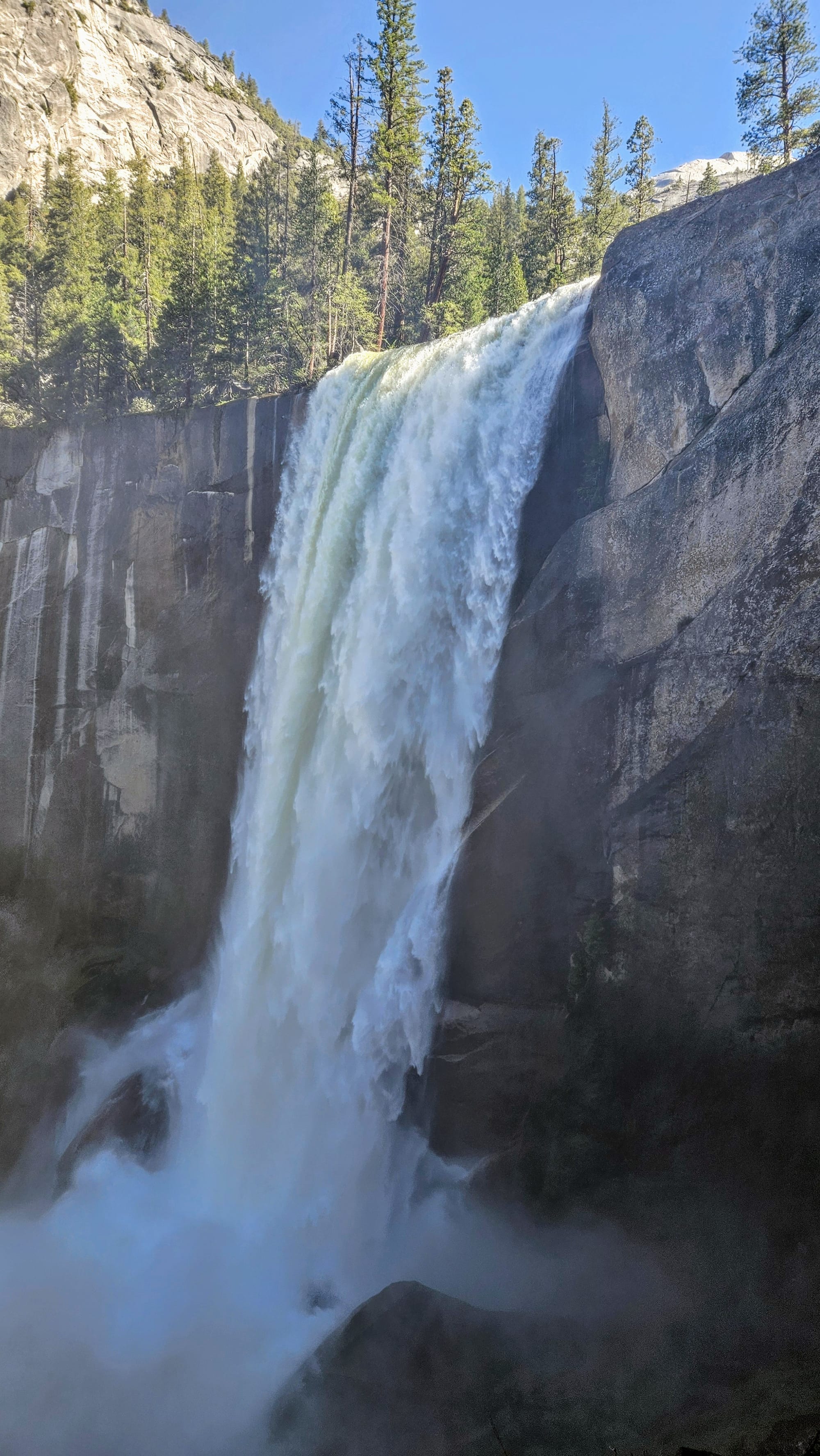
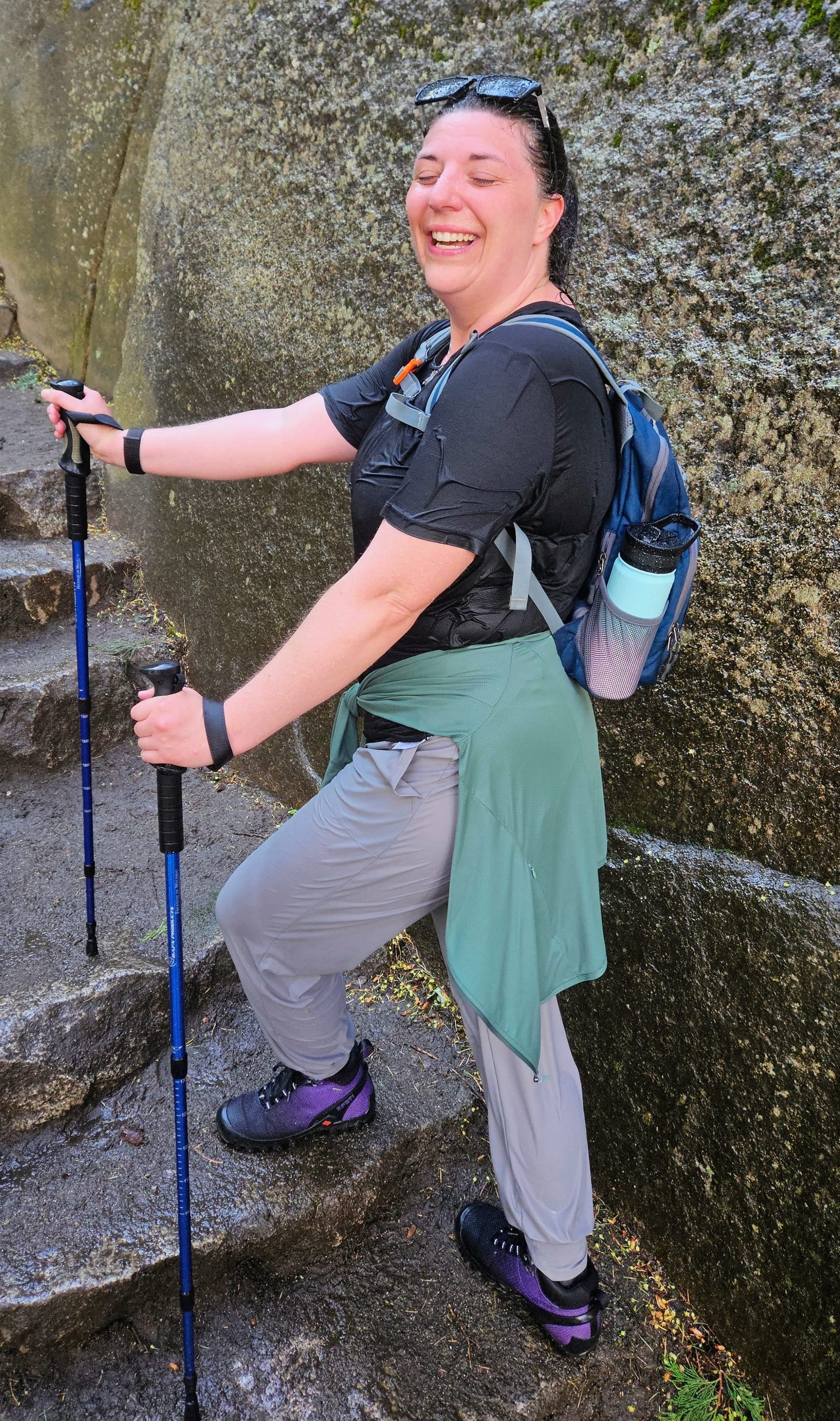
That is the face of someone way too happy from her shower and completely ignoring the next part of the trail: More climbing, followed by, you guessed it. More climbing!
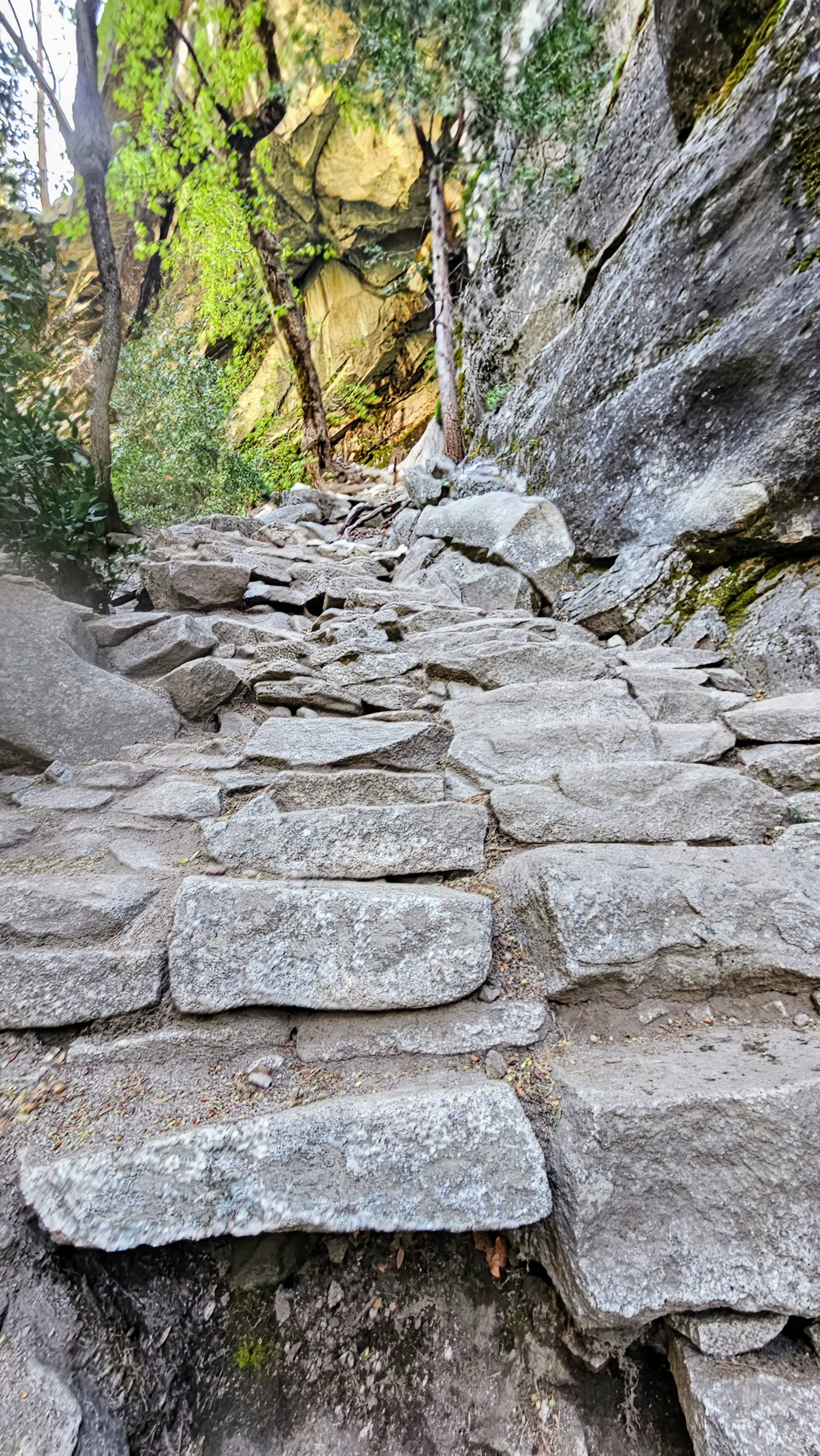
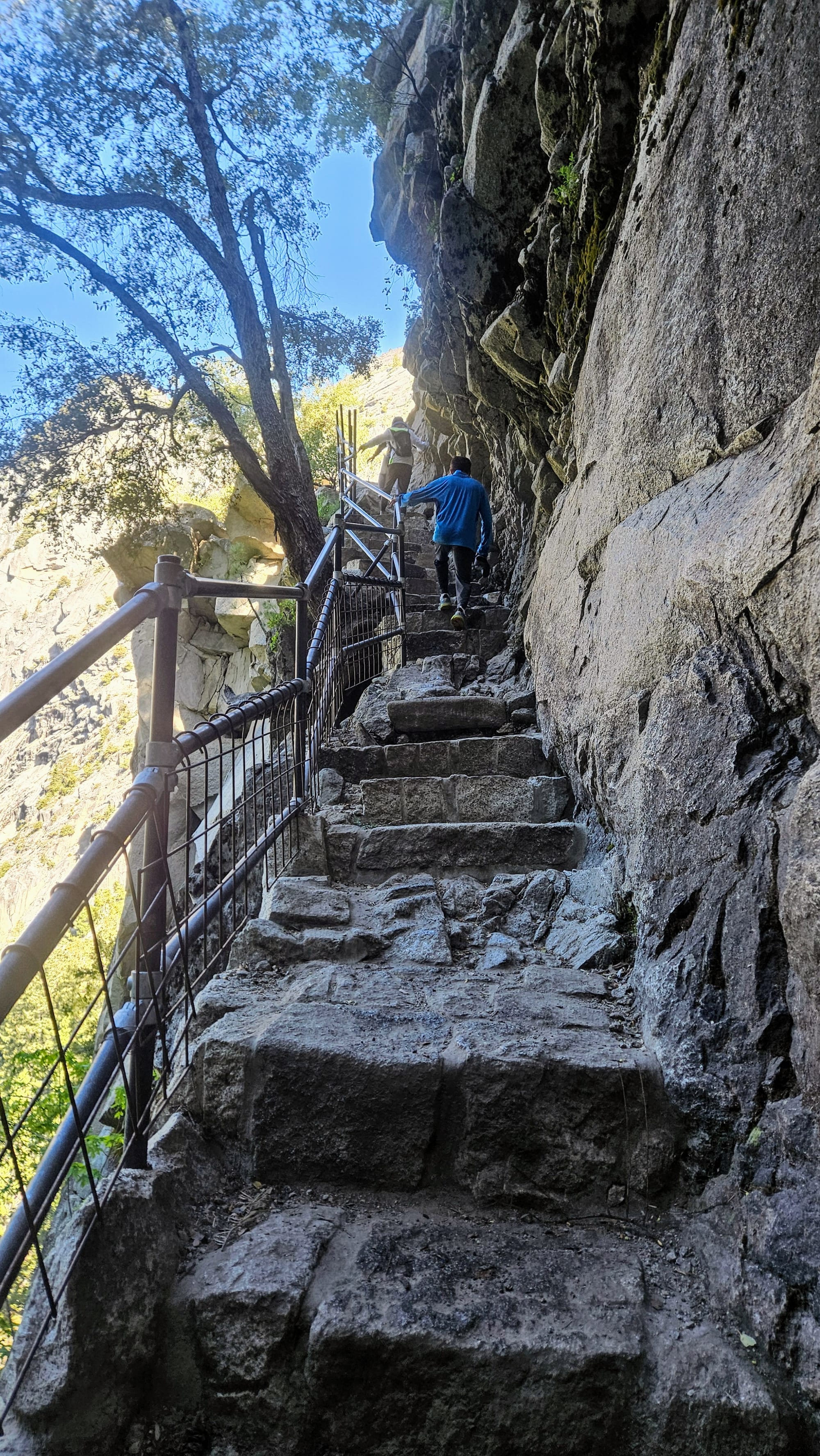
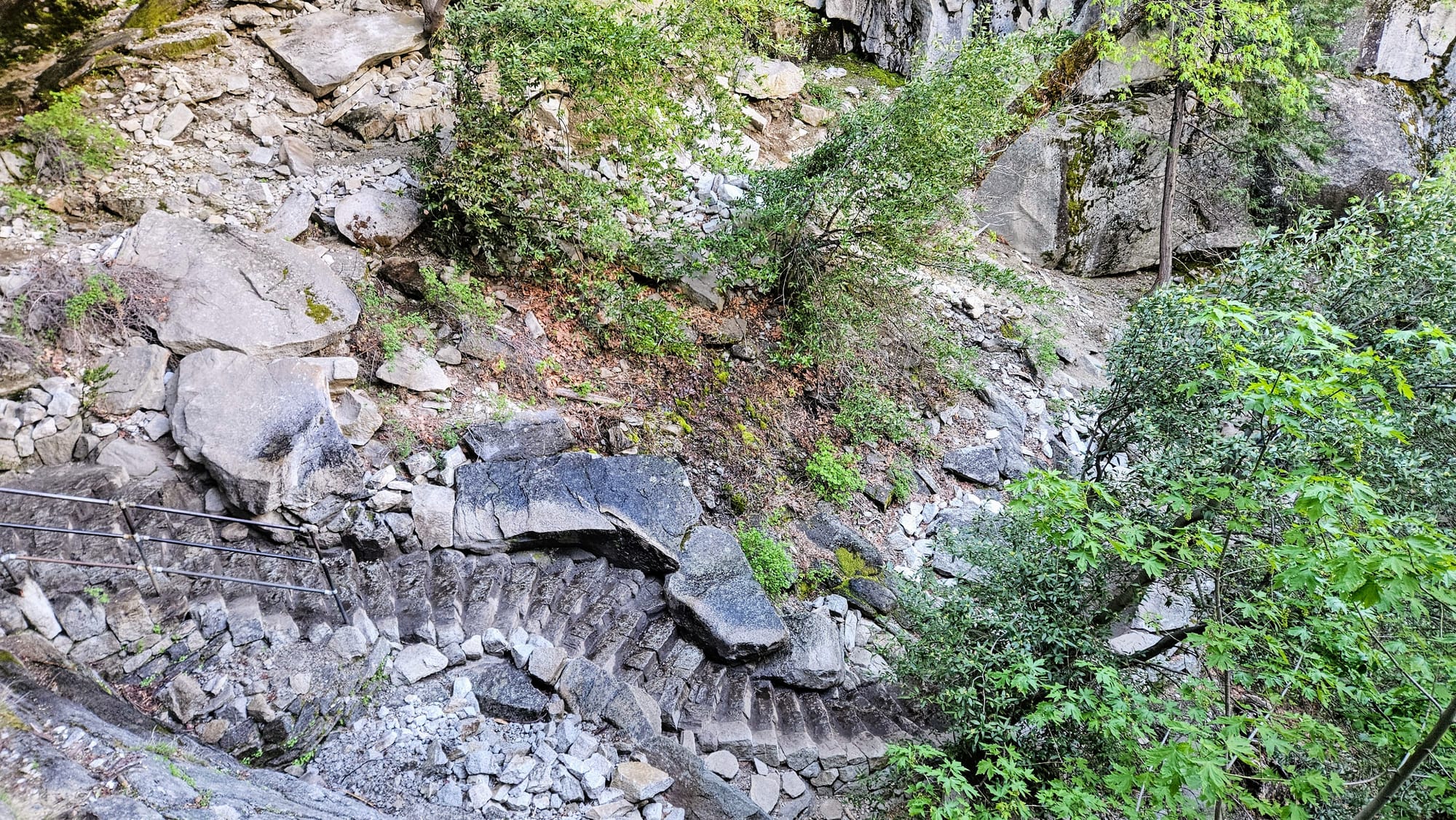
Our first respite came at Emerald Pool, a flat granite slab at the top of Vernal Falls, where most hikers regroup after their big climb, hanging their jackets in the sun and having a well-deserved snack (that the squirrels think they deserve, too). We had a quick snack and tried our best to dry off. I was very thankful to have brought along a change of shirt!
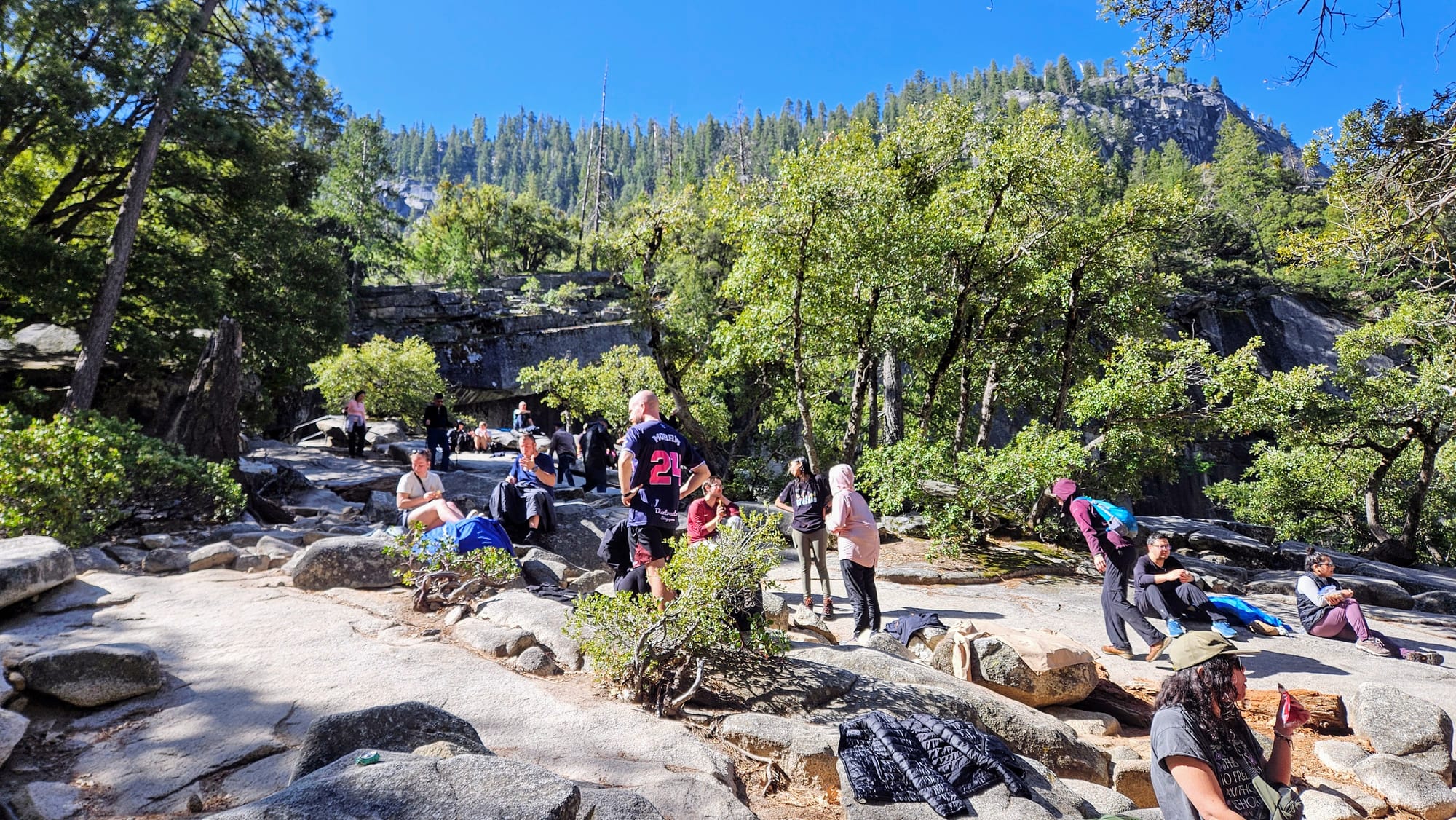
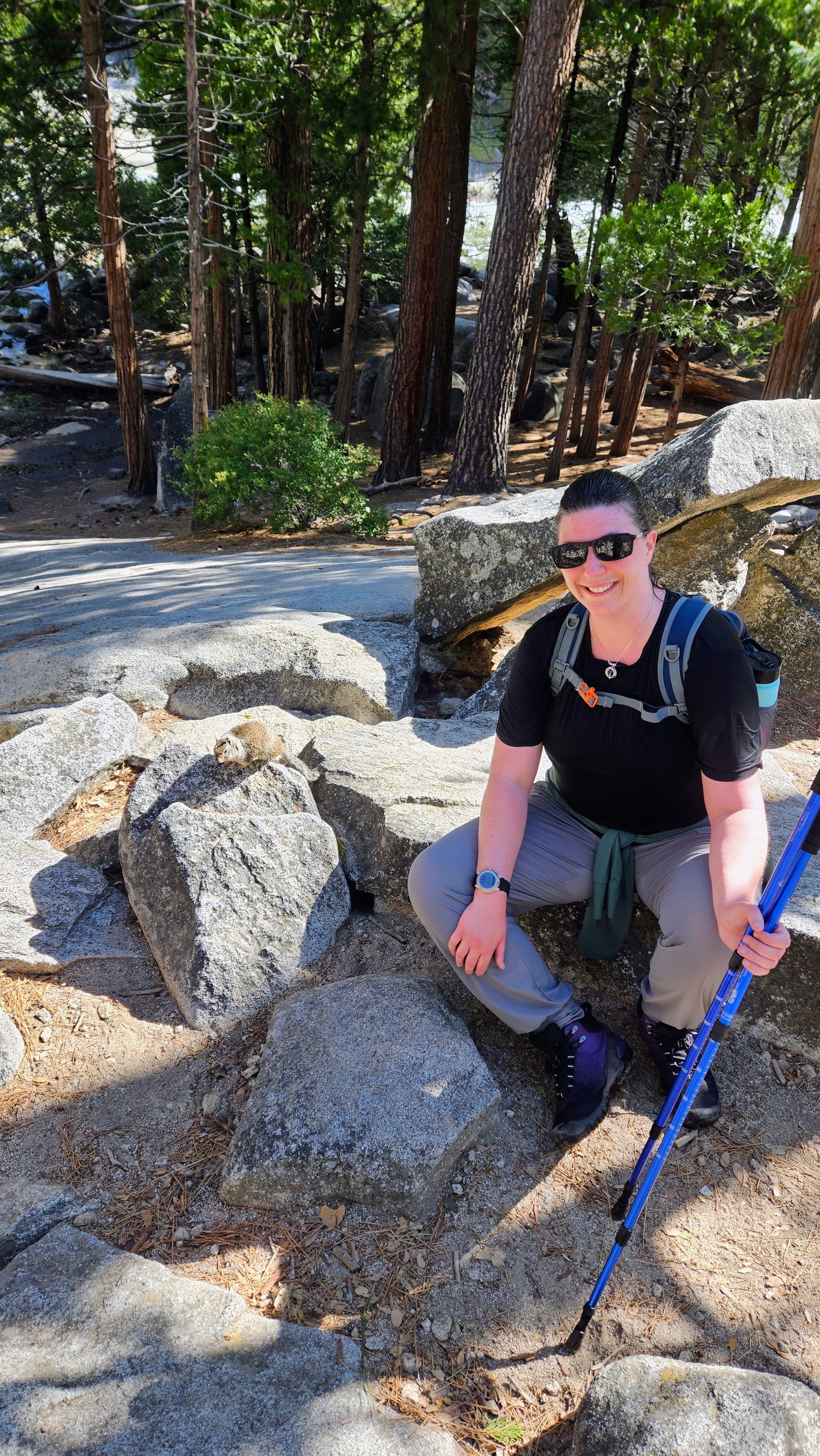
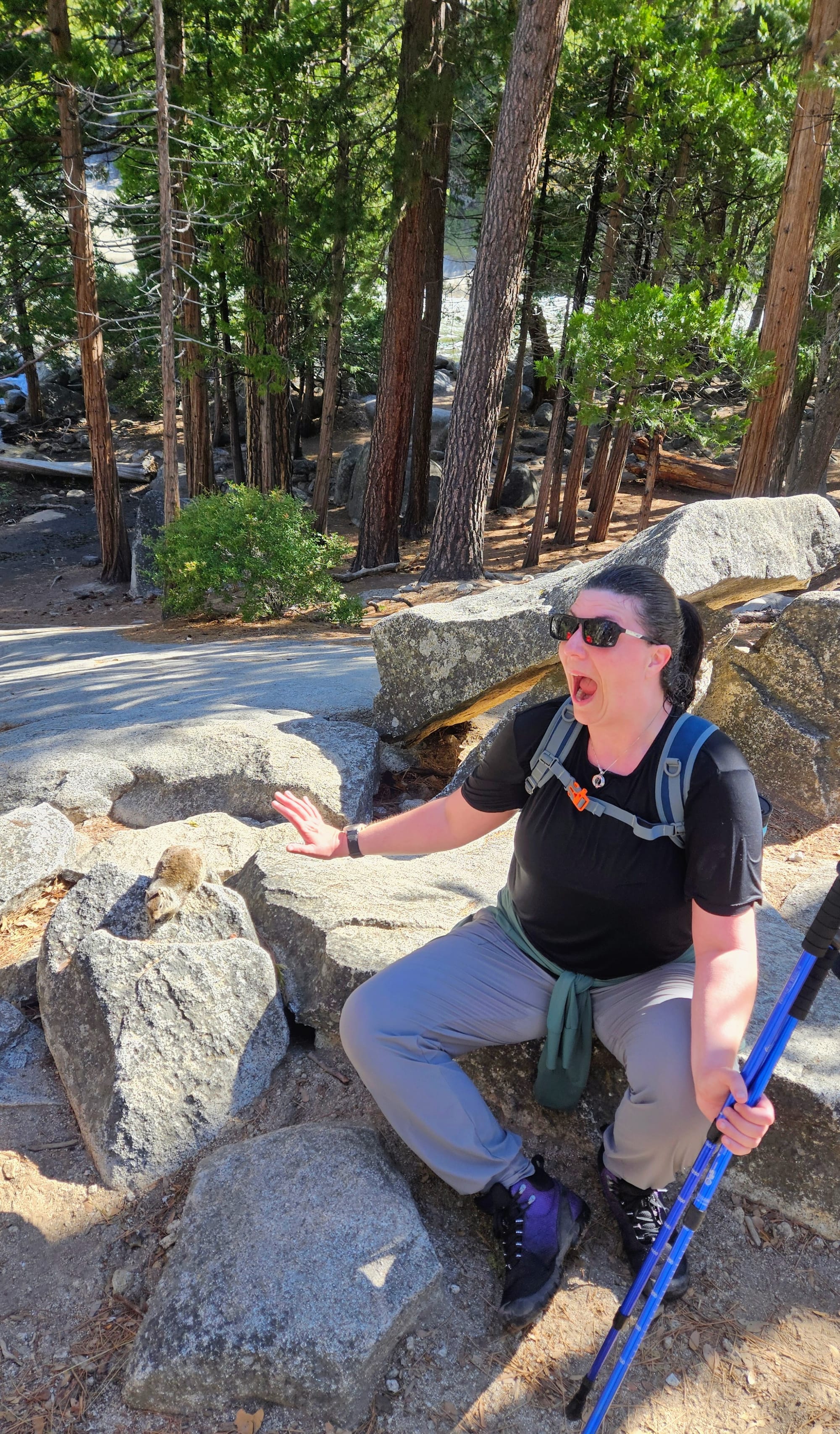
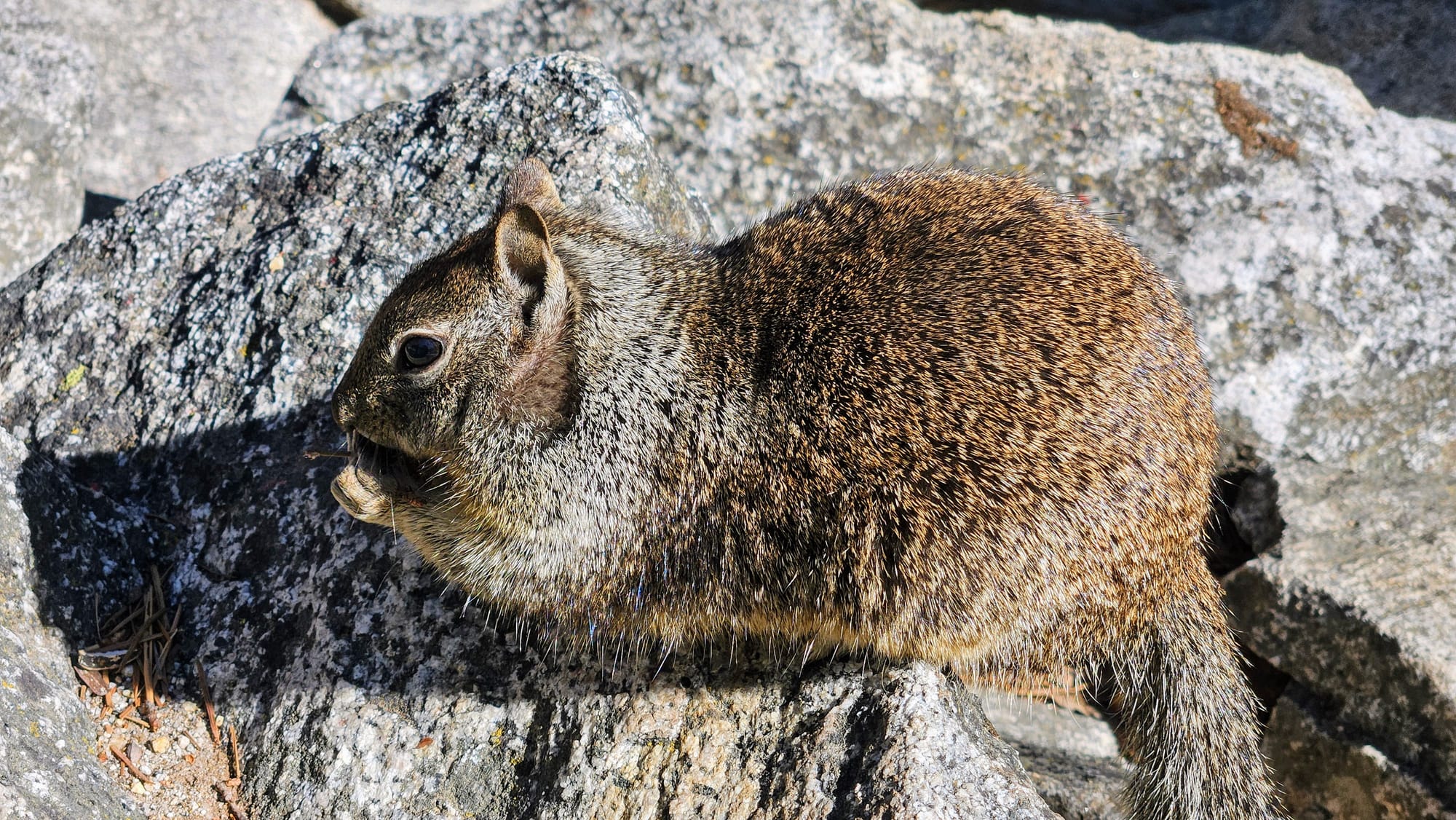
Our squirrel friend found his own food in nature. I did not feed him, nor did I pet him, contrary to what these pictures insinuate.
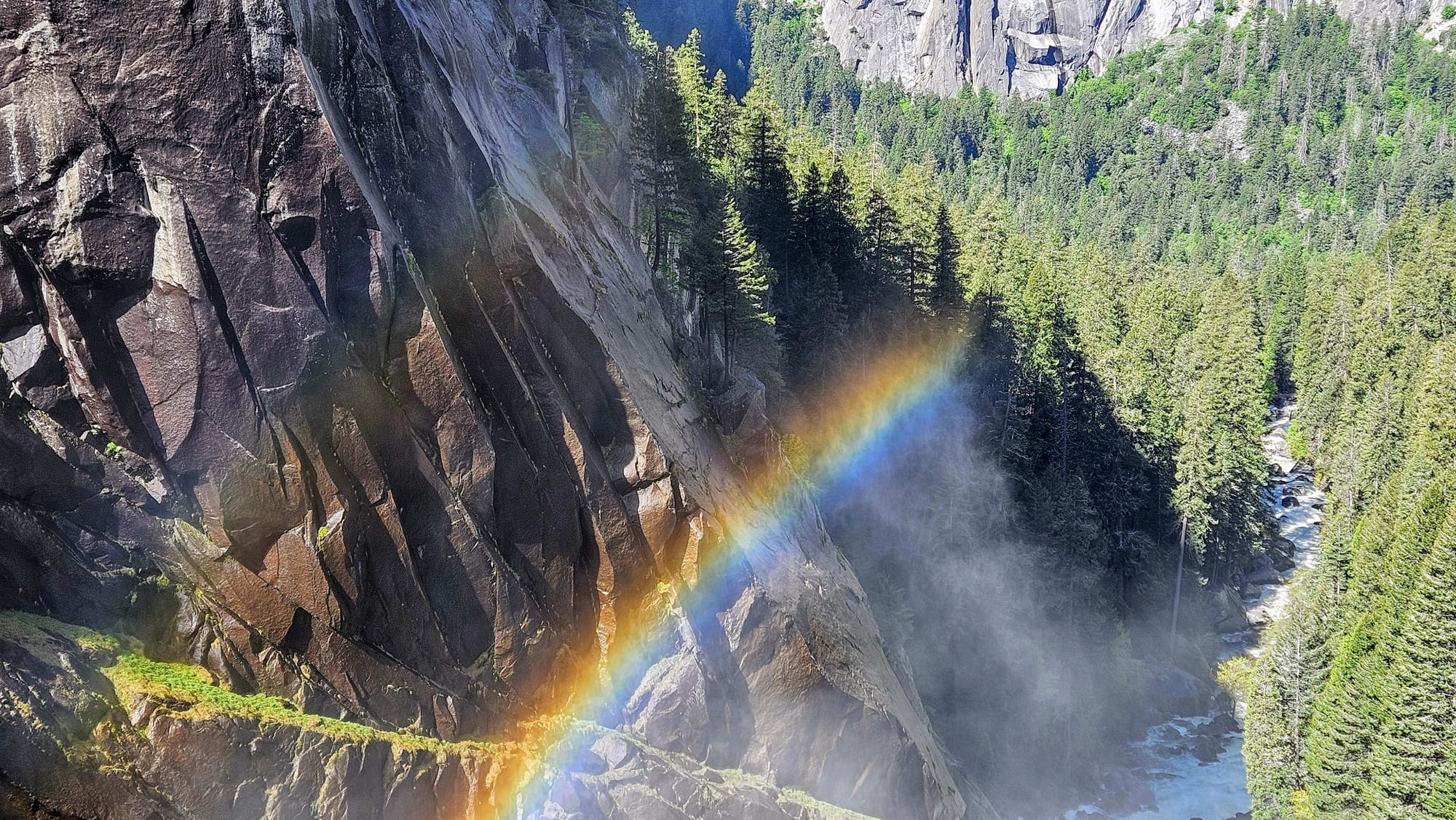
The beauty of our hike was proving to be a vital factor in our continued stamina. Whenever we started feeling taxed, all we needed to do was look around, and we felt motivated to keep moving to see what was next. Unfortunately, the map was telling us that what was next would be a real doozy. If we chose to continue onto Nevada Falls, we'd be facing another multi-flight staircase.
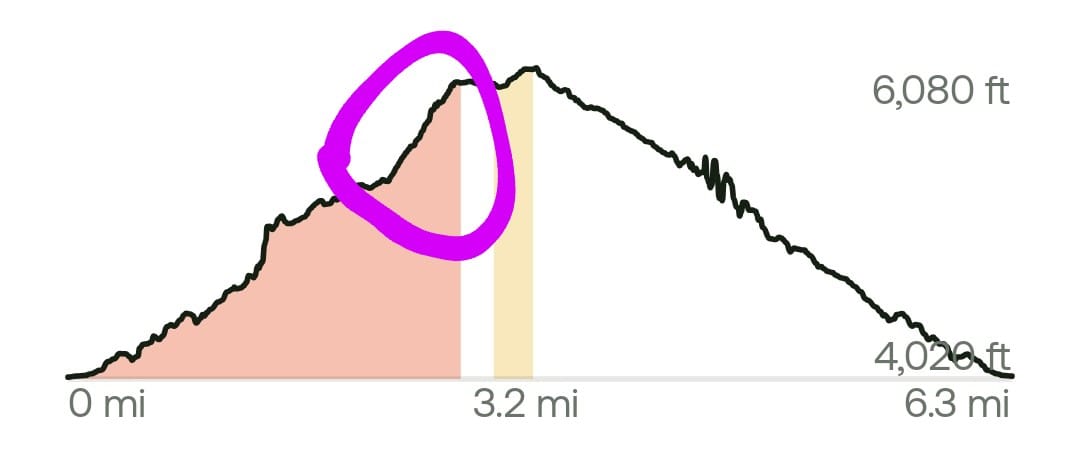
We had a few minutes to make our decision as we hiked from Emerald Pool to the intersection with the shortcut. Would our regret be higher if we looped back now, or if we continued on and totally wore ourselves out?
When it comes to hiking, we're a little bit quirky. We've mentioned before that we prefer boulder climbing more than straight hills of dirt. This is because our home turf is granite mountains. We also tend to skip waterfall hikes because, as we like to say, "We've seen them." If the hike leads to just any old waterfall, we would rather choose a different trail (assuming a more preferential trail exists). But, if the waterfall is special in some way, like its size, height, power, or surrounding landscape, we will go the extra mile for it. Let's call it high standards, and we had a feeling Nevada Falls would meet them. We trekked on.
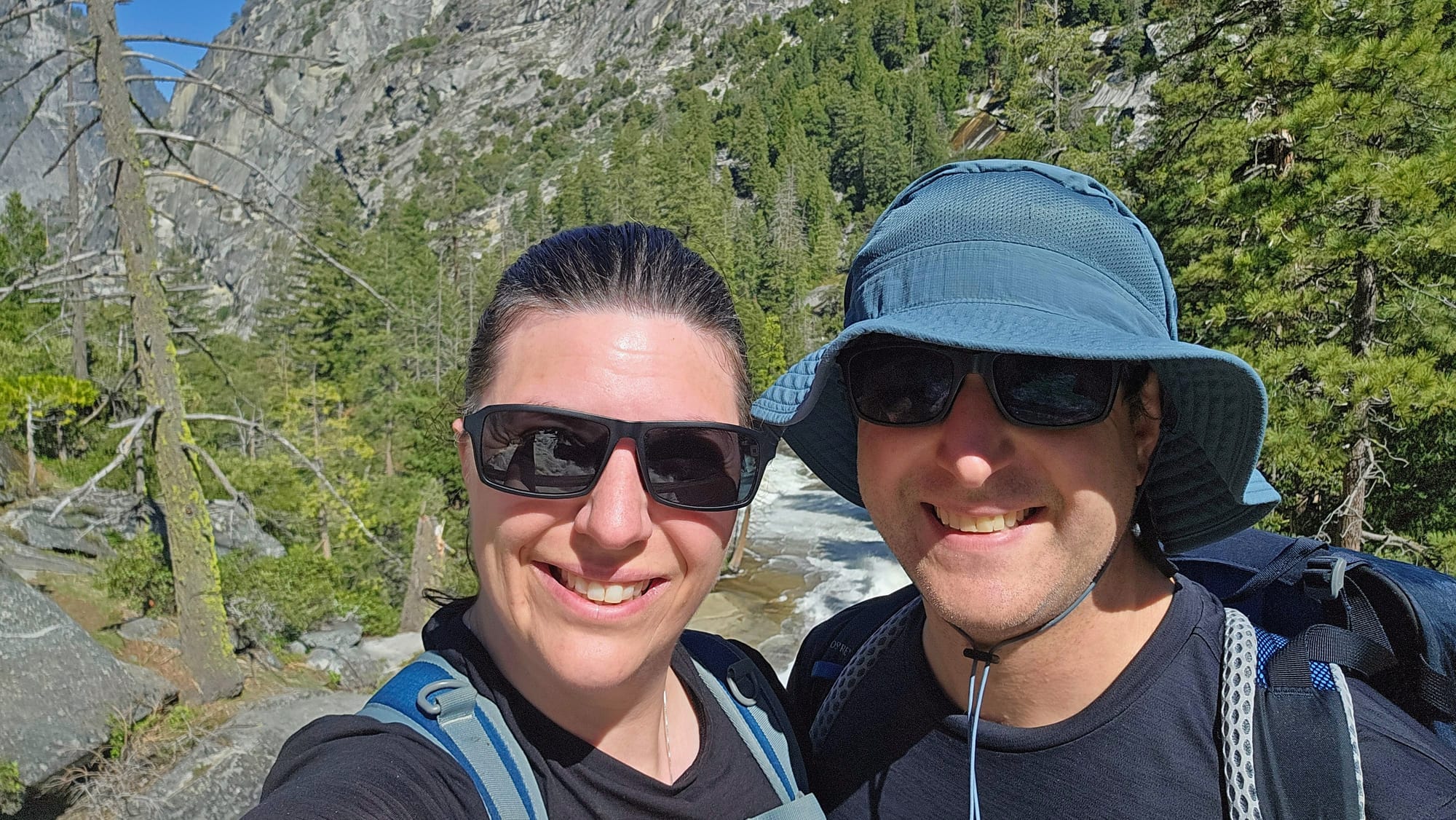
Climbing up to the base of Nevada Falls, we could barely see it through its mist.
But after some more switchbacks, we came to a view like no other.
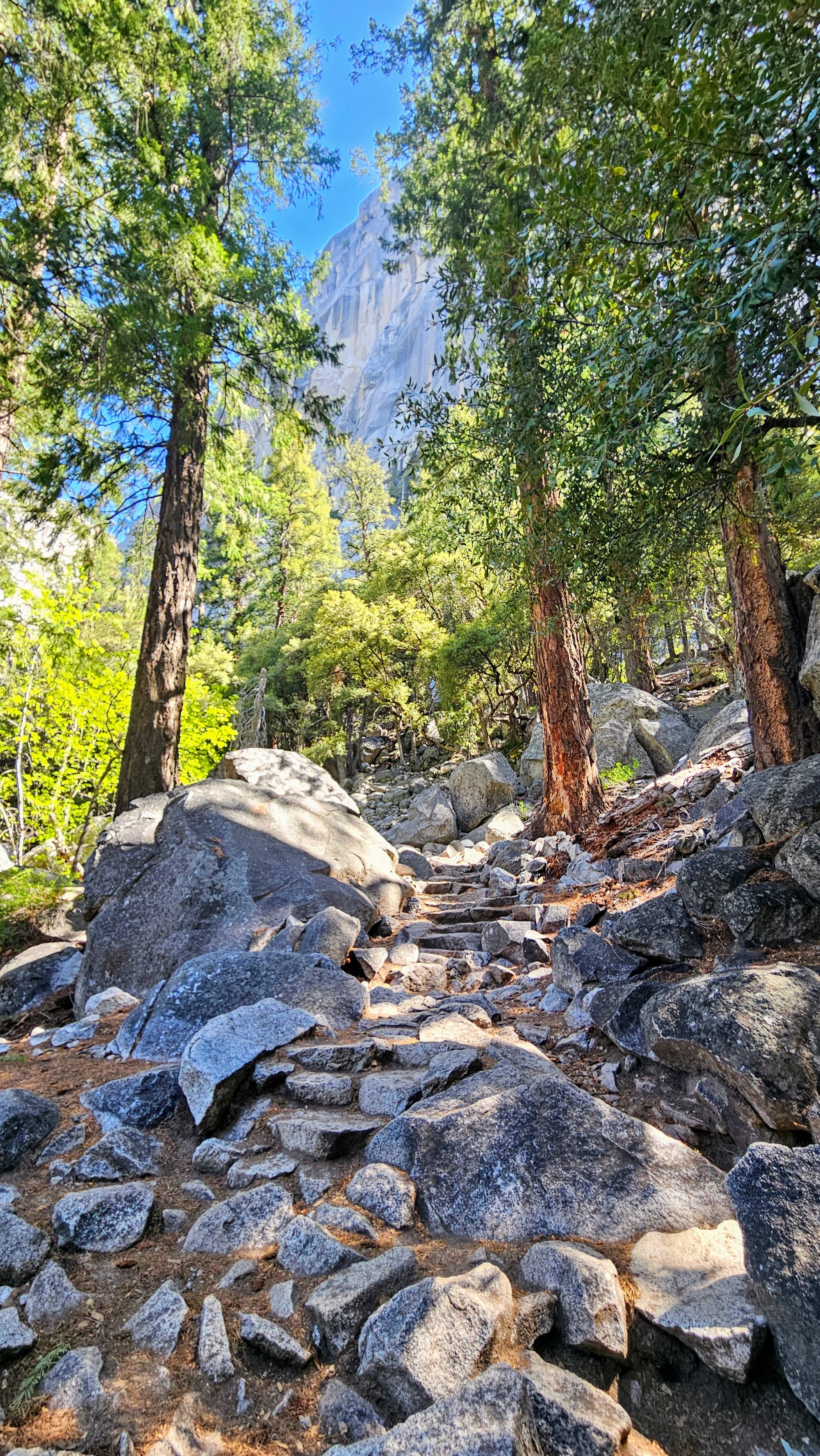
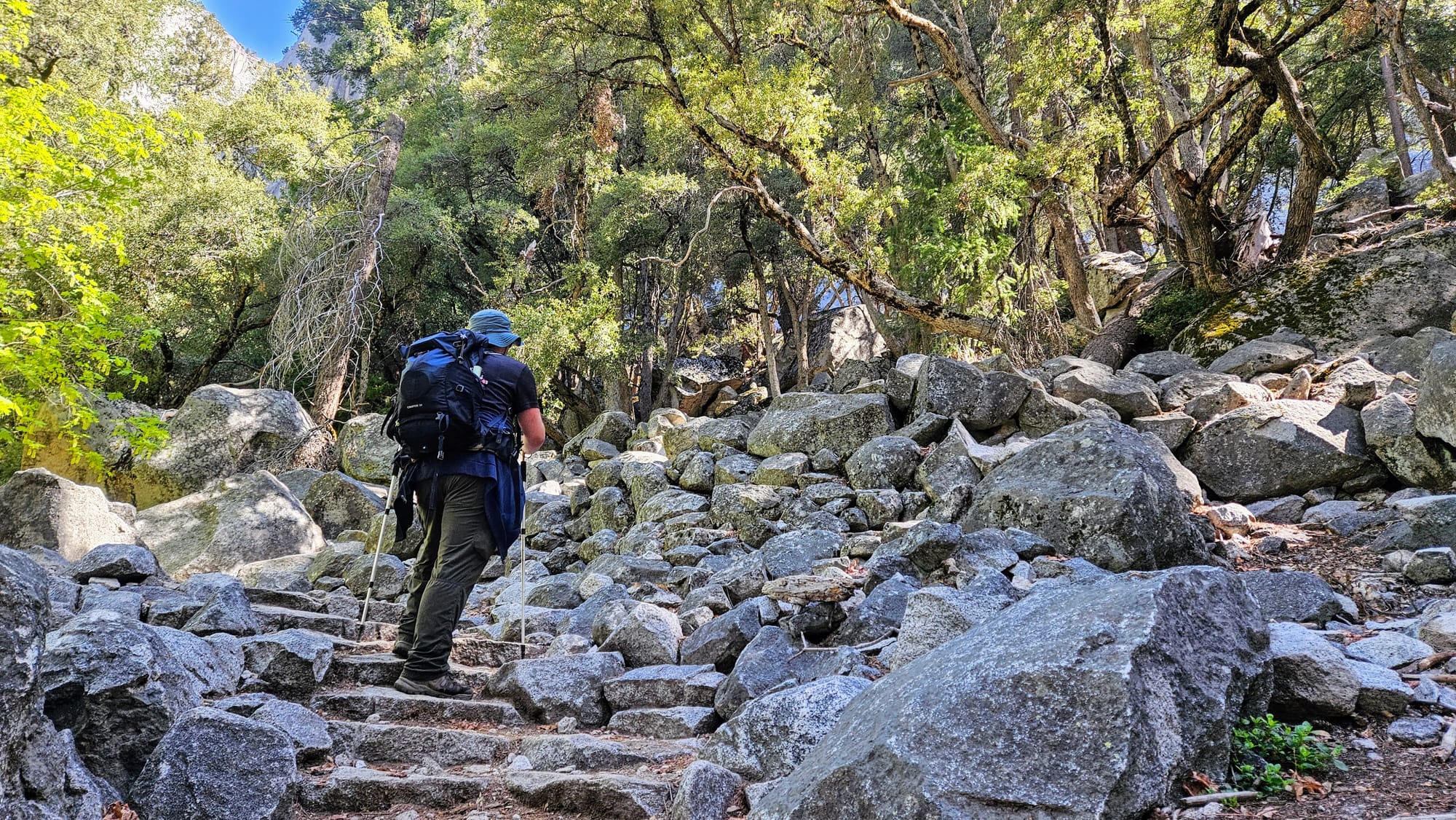
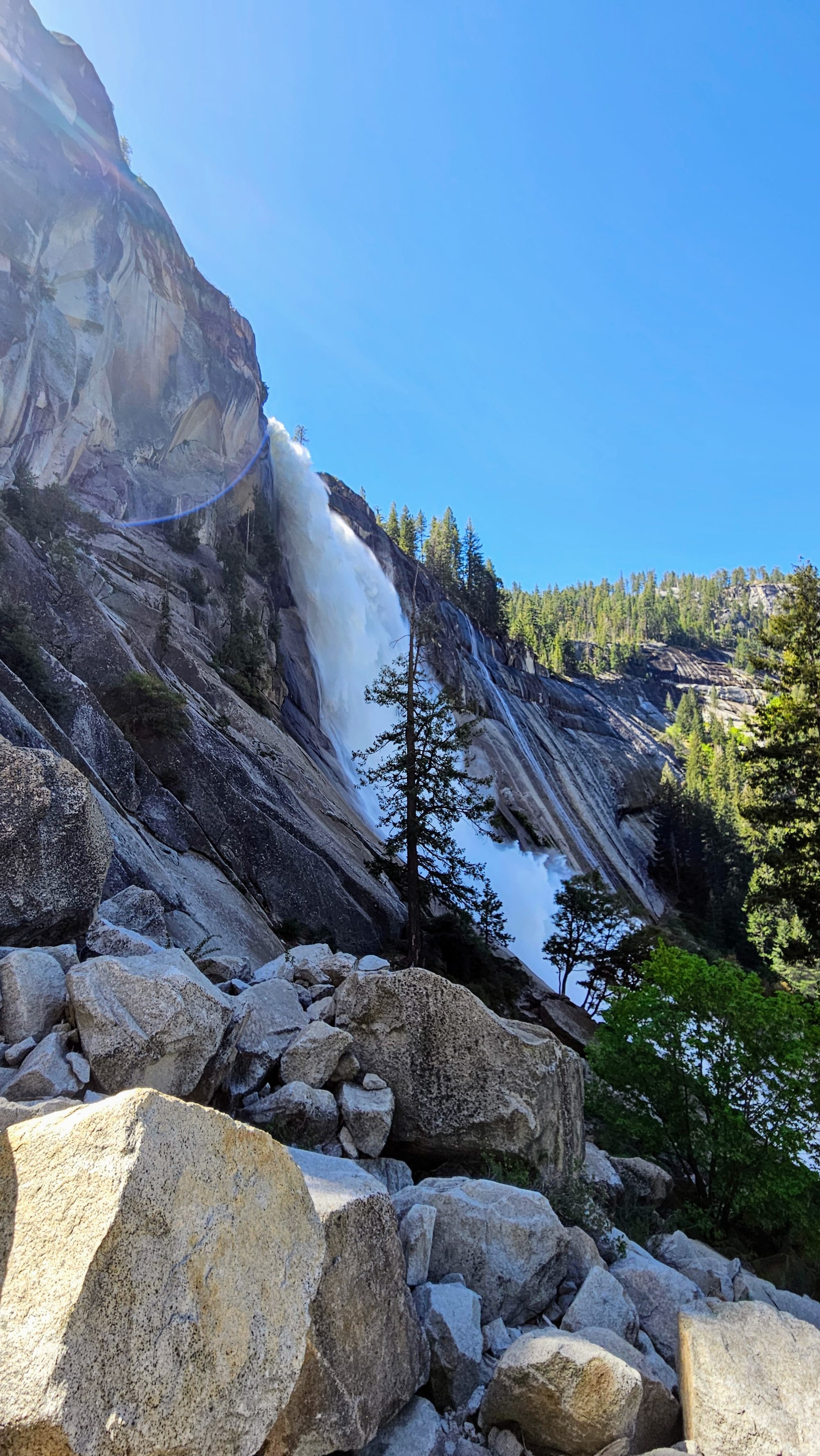
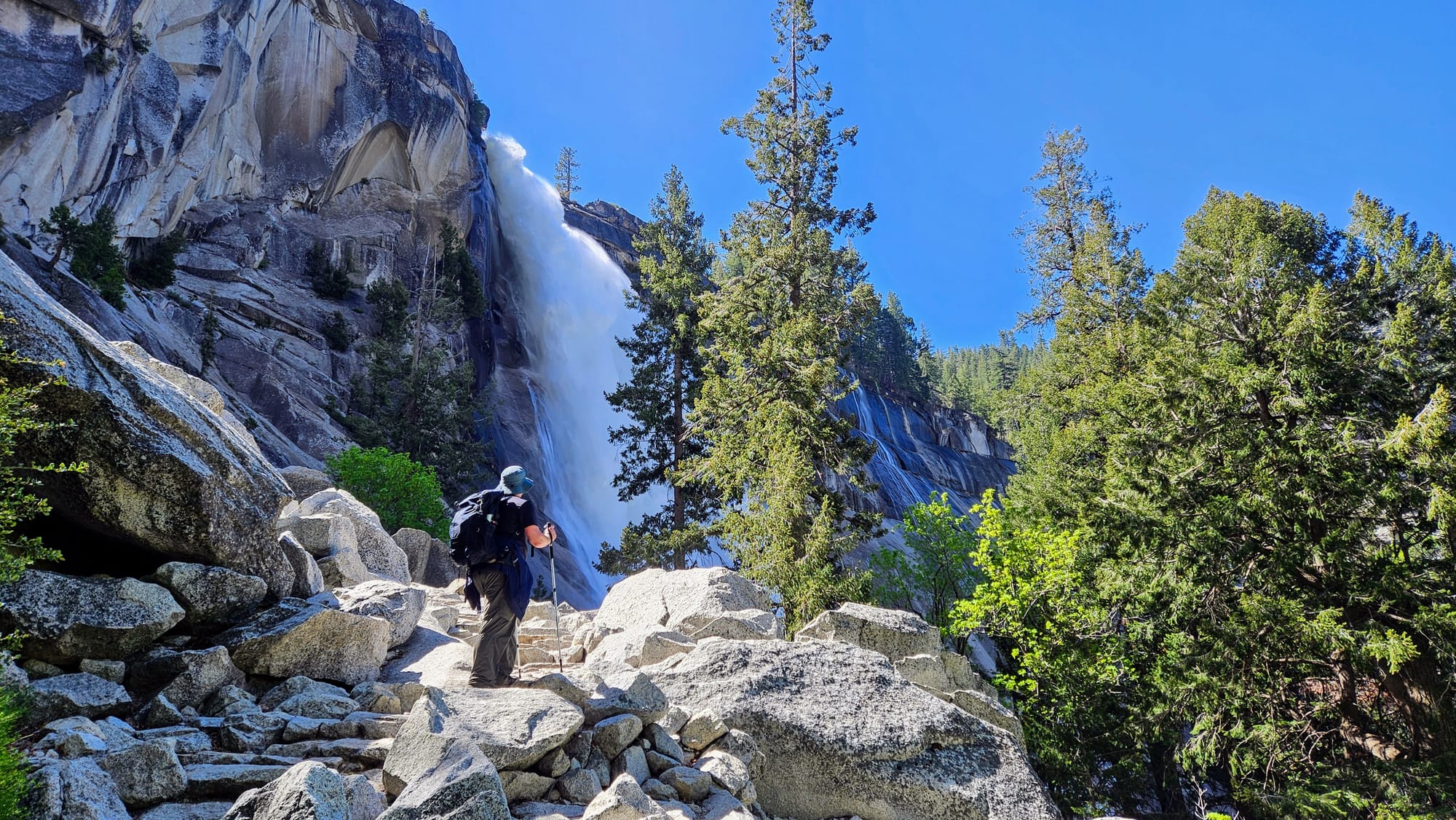
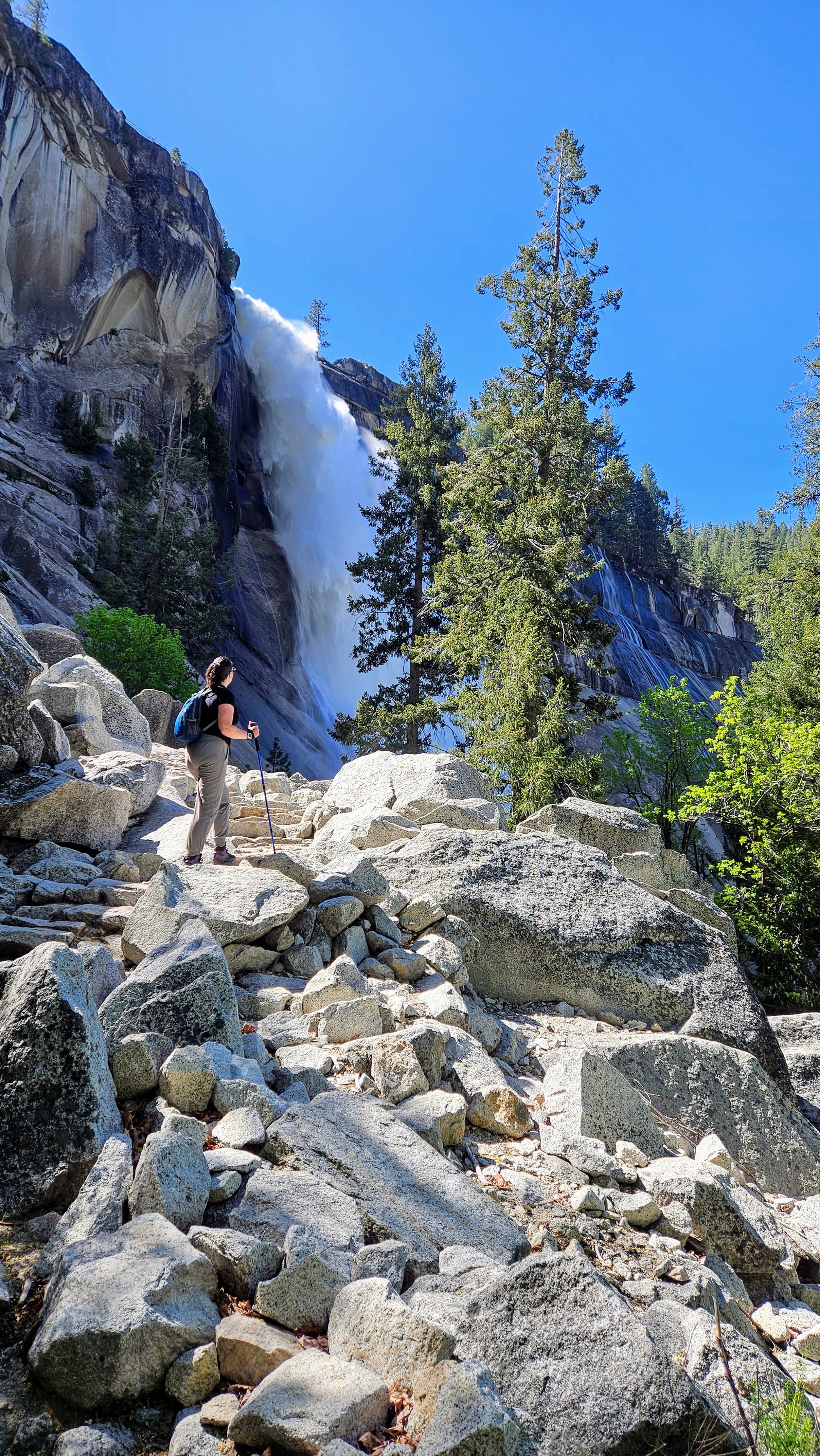
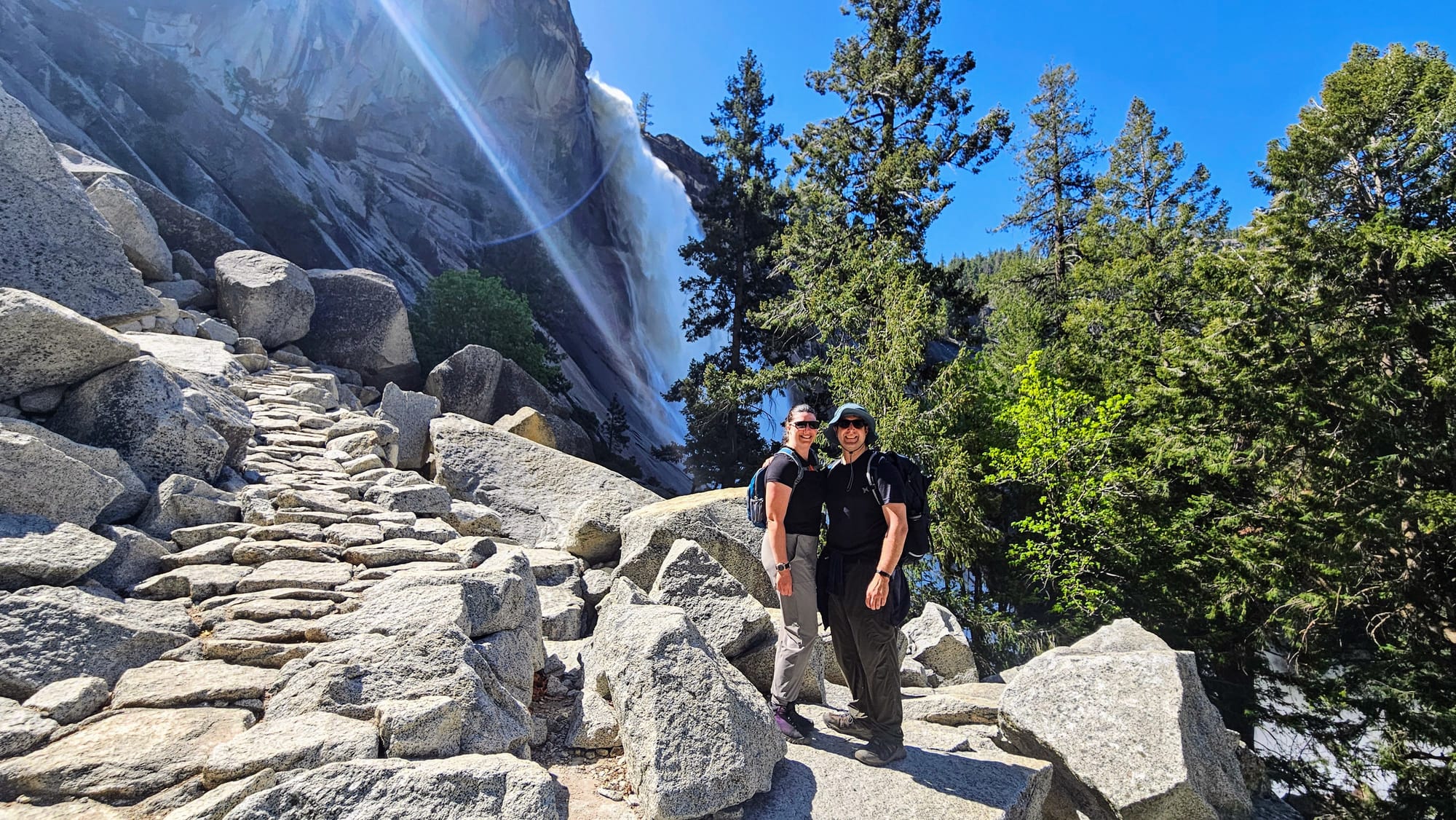
Our little photo shoot gave us a much needed rest. We had slowed down tremendously. My lungs felt like they were about to burst and our legs felt like jelly. The remaining part of the climb was a slog, but we knew that soon we'd reach the top of Nevada Falls and most of the remainder of the trail would be downhill.
At the top, not only were we rewarded with flat terrain, but we got wonderful views of Liberty Cap, Half Dome, and Yosemite Valley, now 2000ft below us.
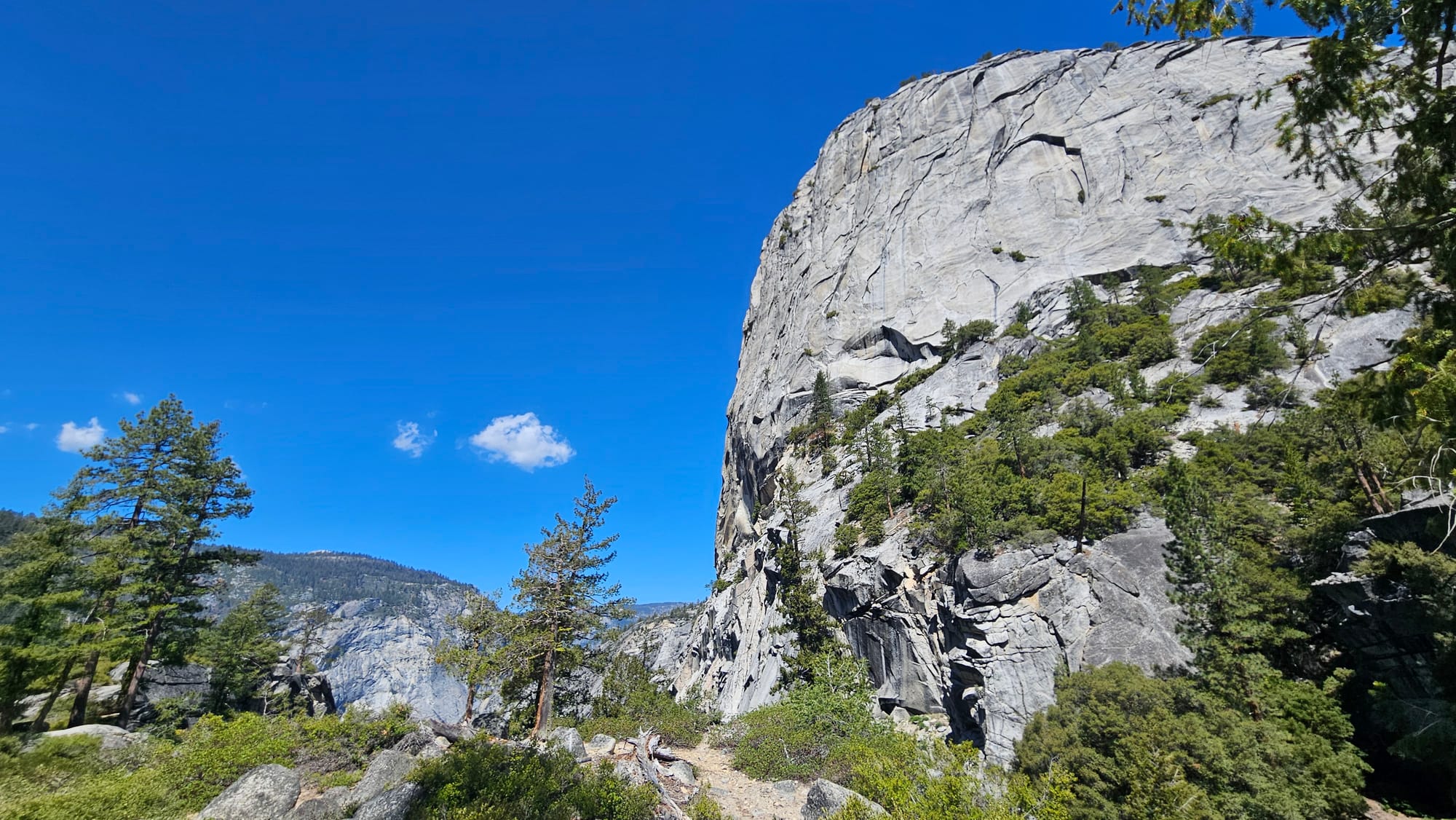
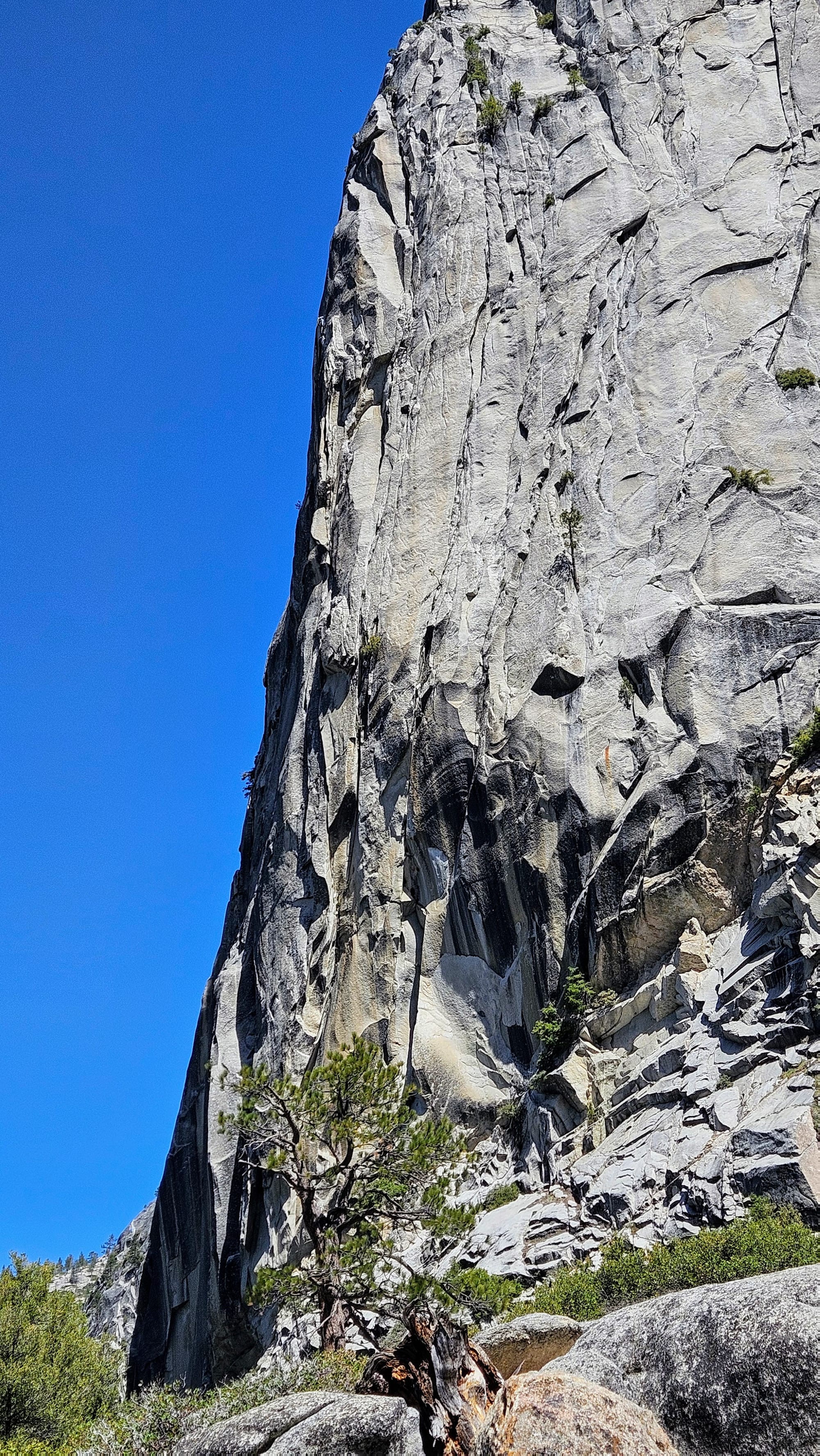
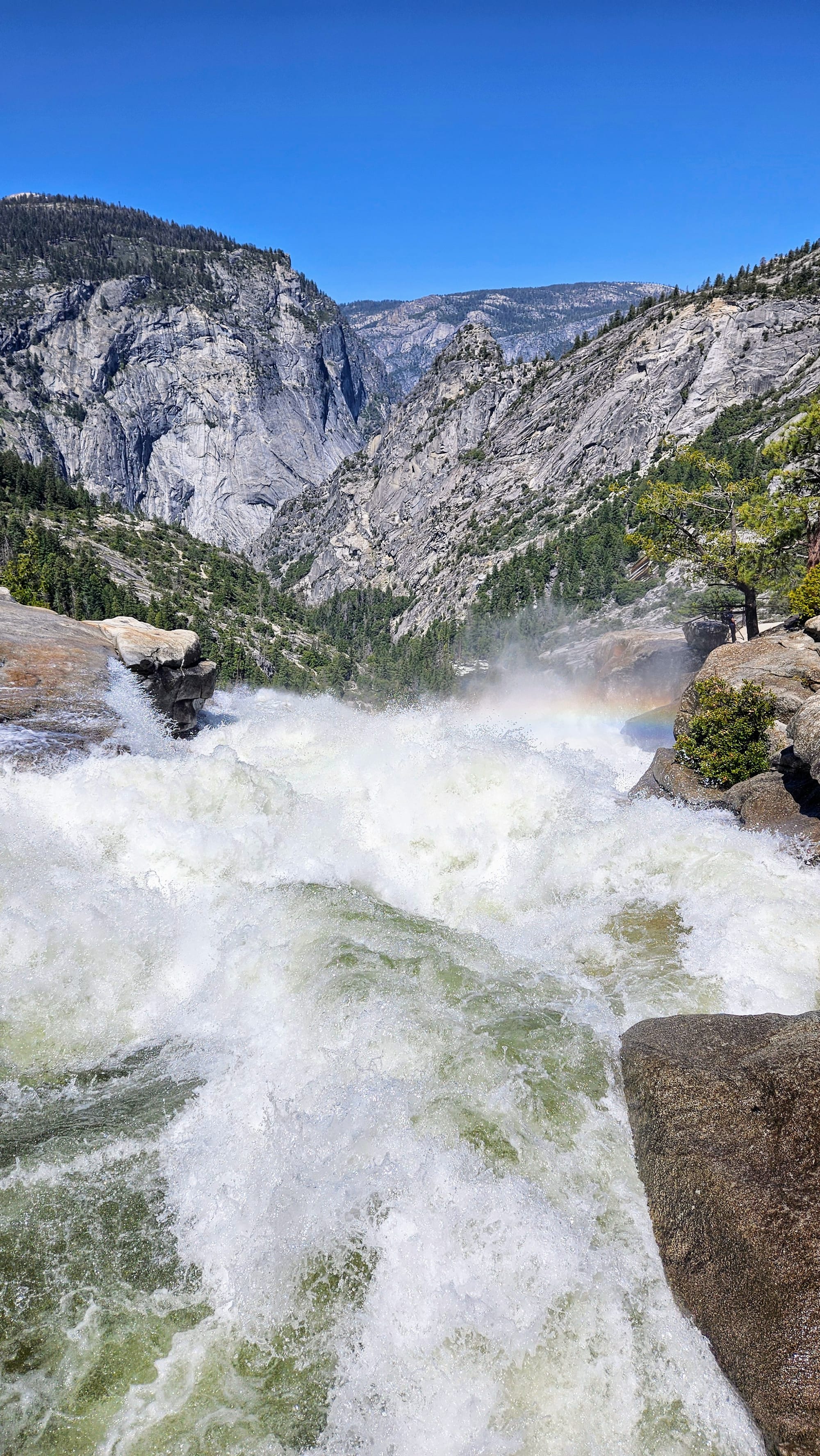
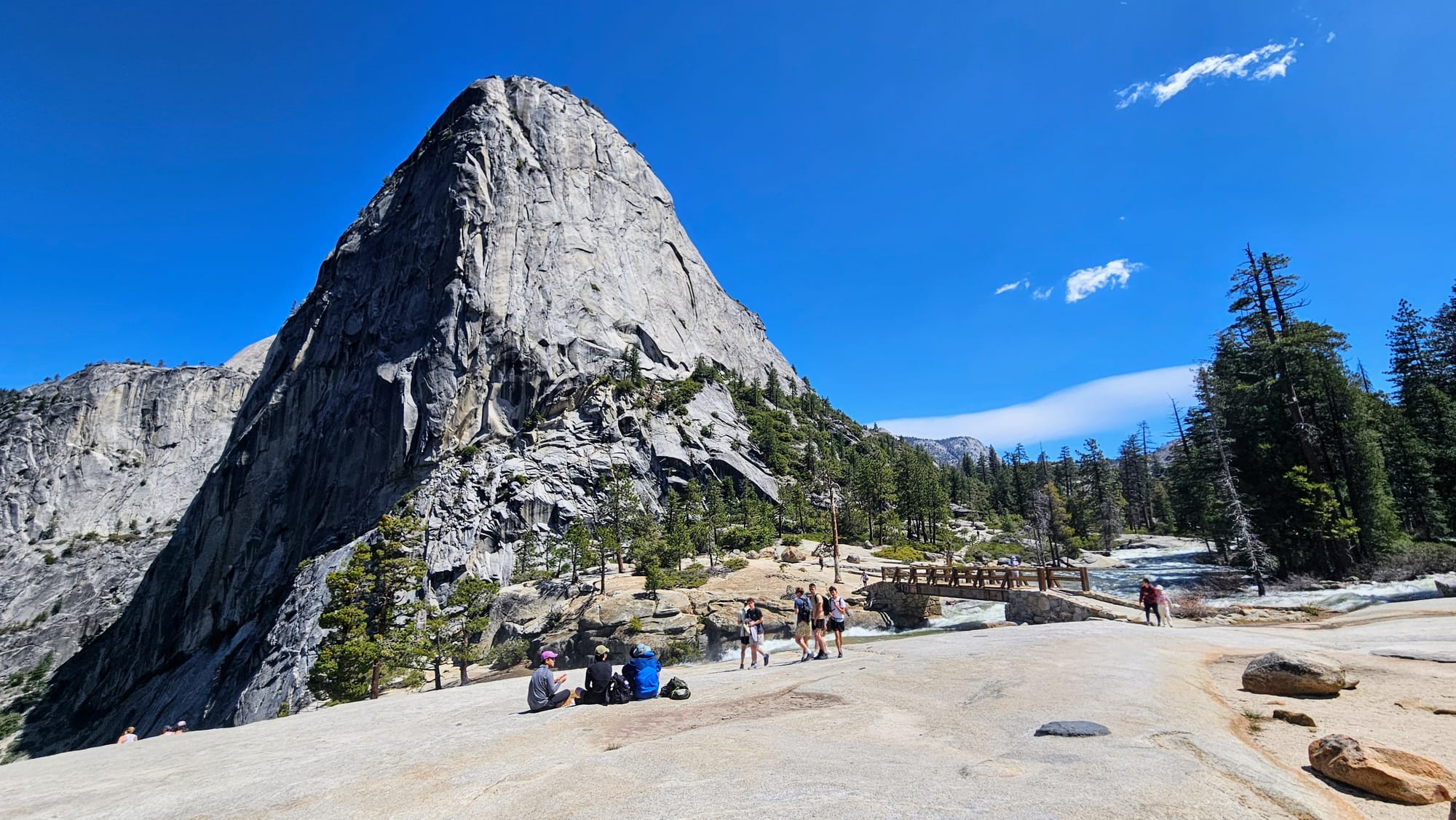
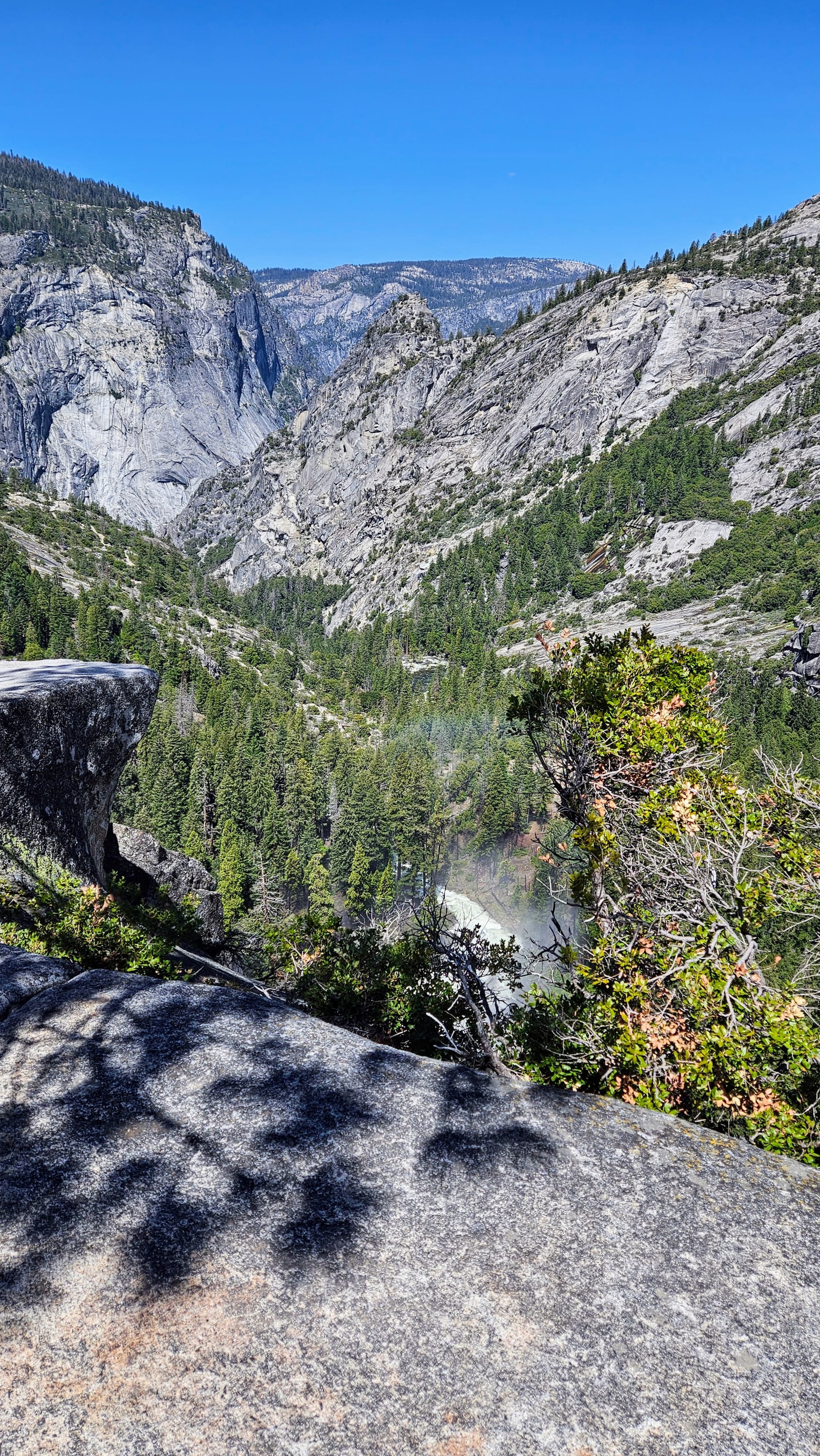
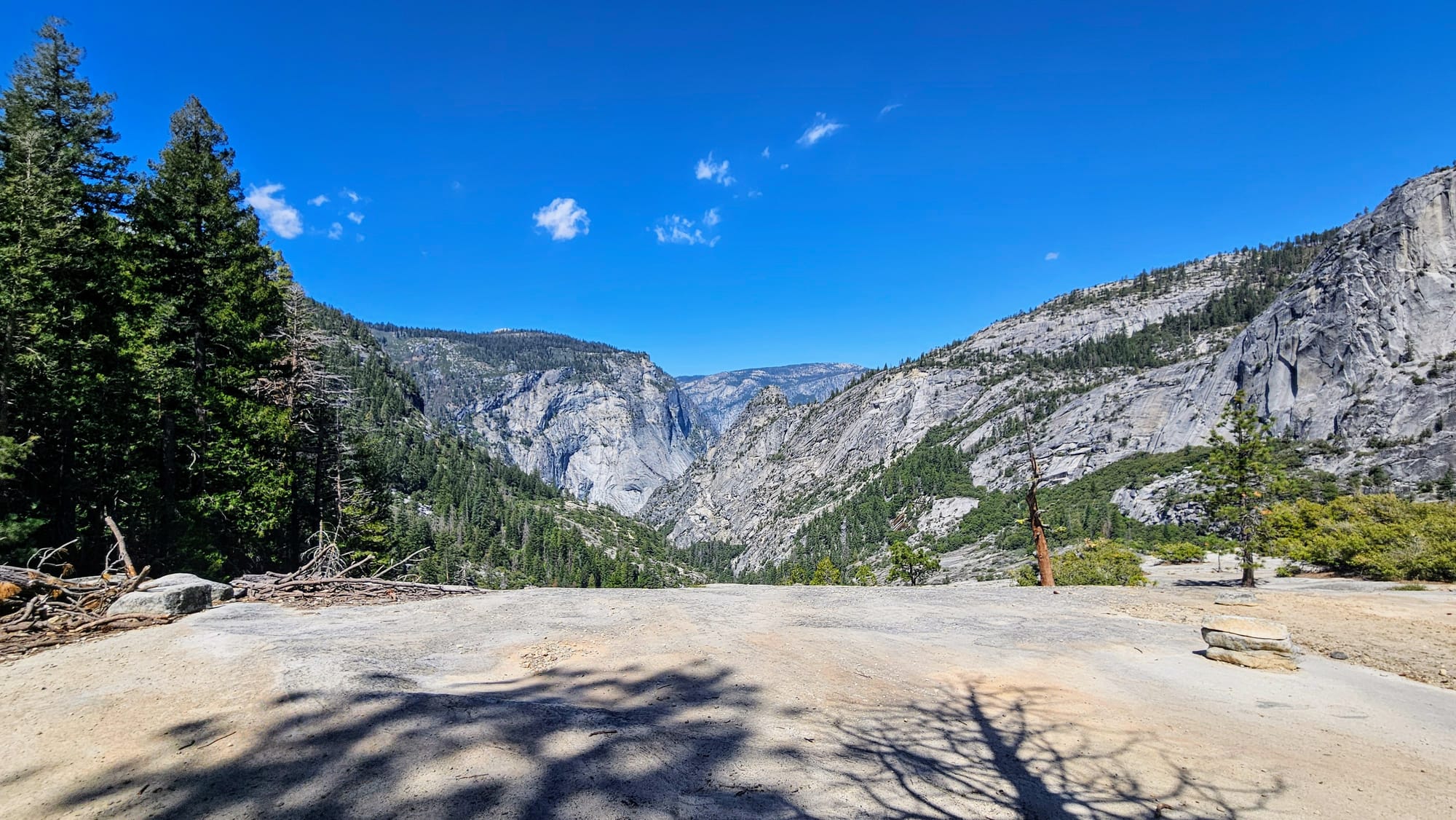
The back-end of the loop wasn't as marvelous as this first half, but it wasn't lackluster, either. We got to traverse a narrow cliff that showered more water down on us. (Can't imagine why I didn't snap any pics of it!) We also had some more fantastic views before descending back down into the Valley. That's Nevada Falls in the distance!
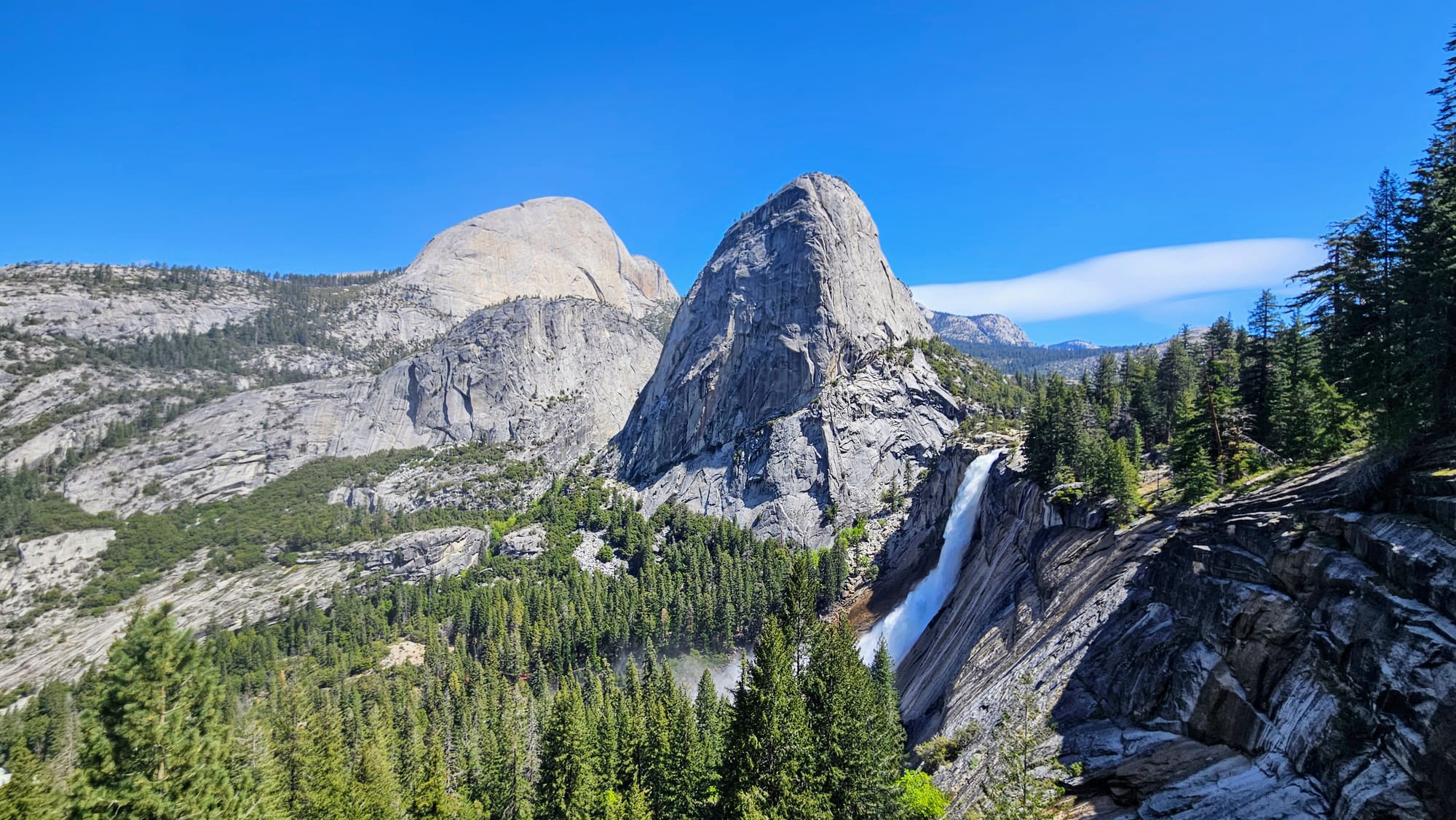
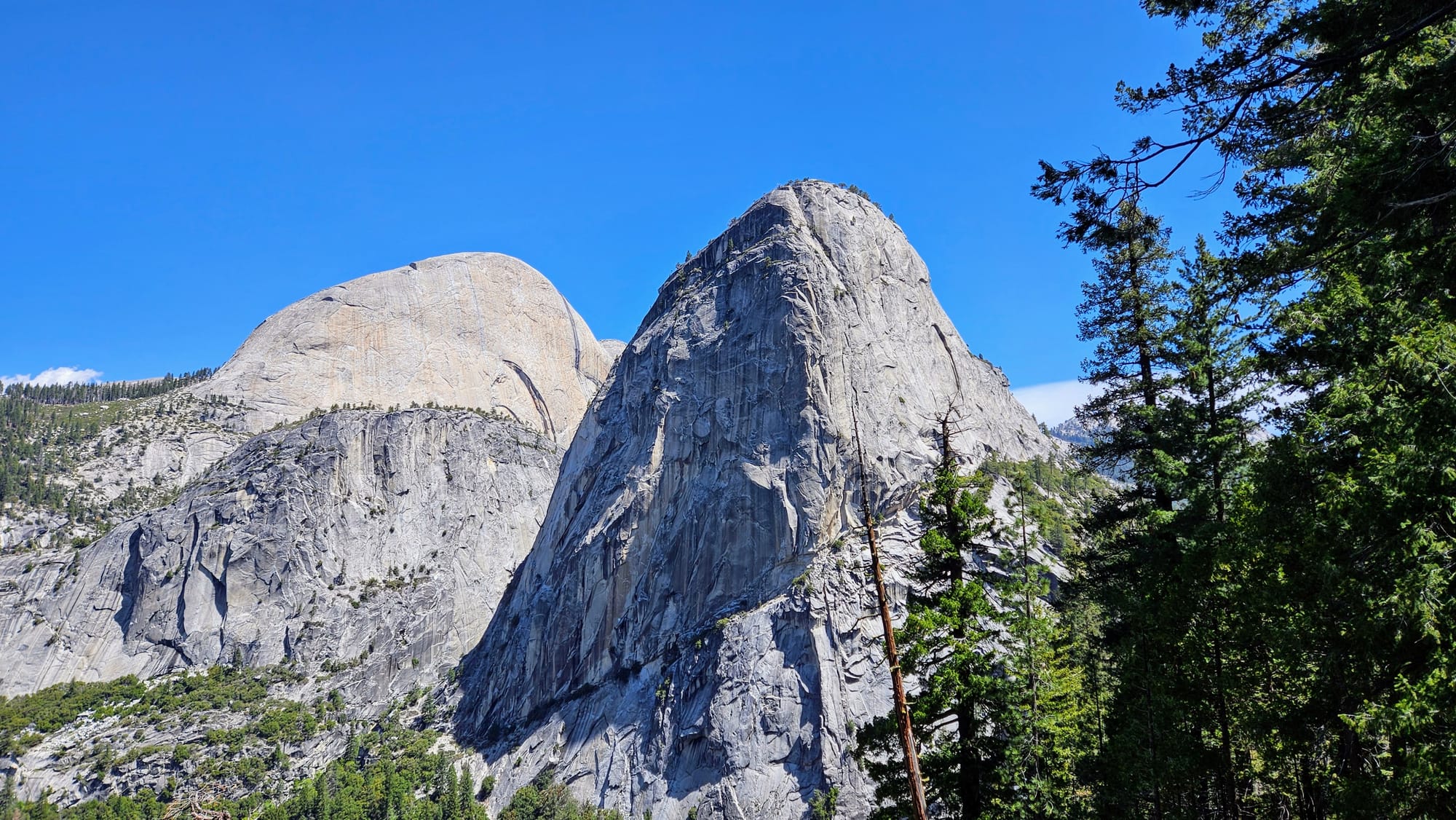
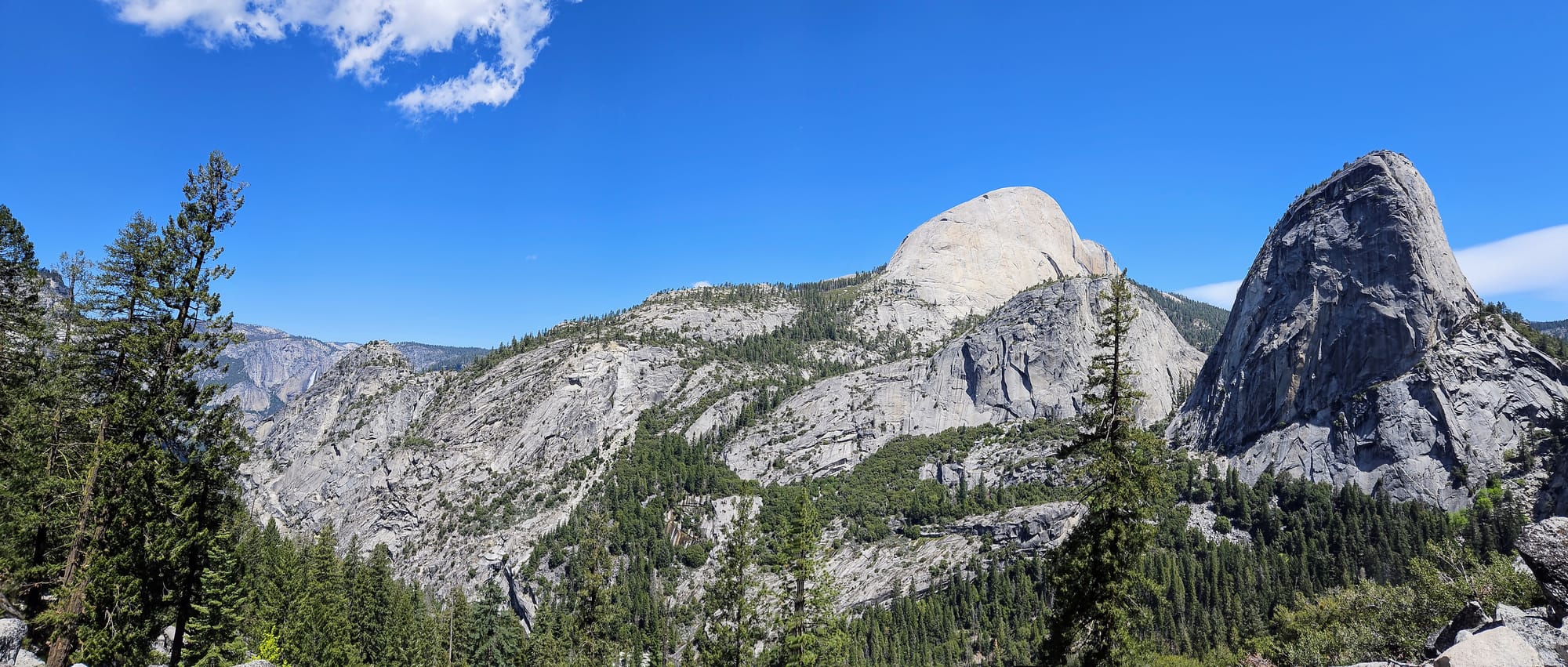
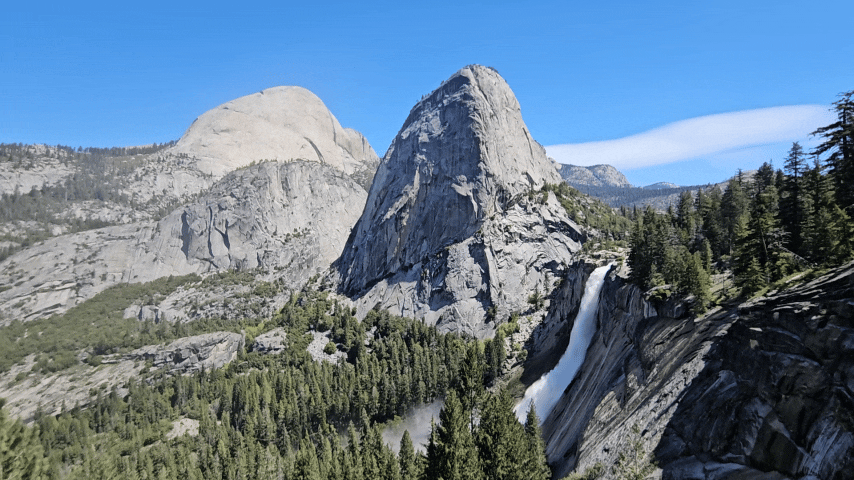
We moved quickly down the switchbacks to ensure we had enough time to get back to our truck and make the long drive back for Tanny. We must have made up for our slow climb, because we ended up beating book time! We wanted to use this hike to gauge our hiker abilities, and it delivered. We were proud to accomplish it at all, but we hit a lot of personal milestones on this day. We kept a good pace, stopped a lot less than we used to need to on similarly strenuous hikes, and pushed ourselves through high cardio portions of the climb.
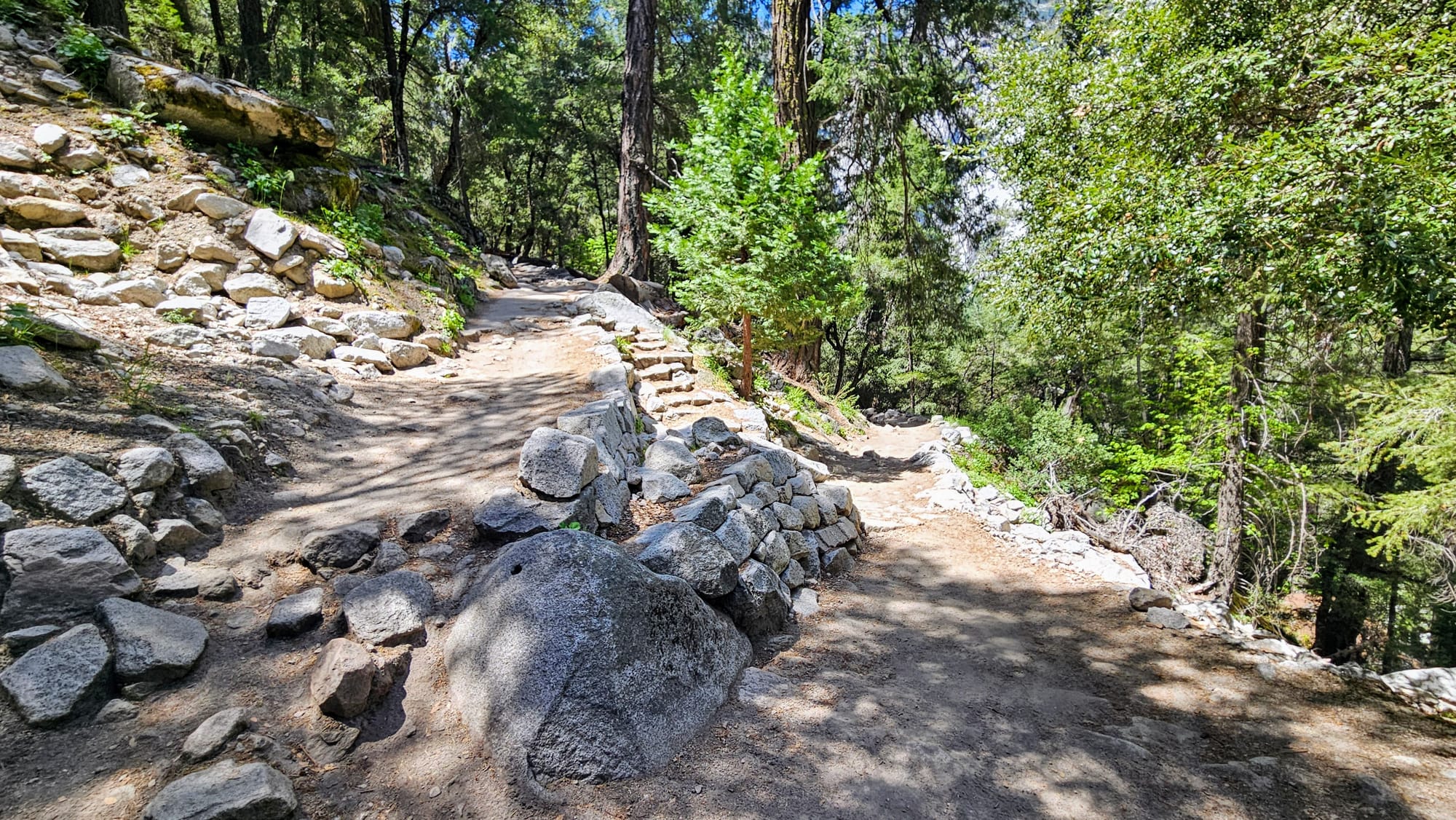
We couldn't have asked for a better introduction to Yosemite. Right away, we noticed that this park has major appeal for all levels of adventurers. You can take a short walk from the parking lot and witness incredible scenery, or you can take any level of hike to different vantage points of the park. Biking is very popular, with the park boasting 12 miles of bike paths separate from motor vehicles. Or, if relaxation is more your vibe, the lodges and picnic areas offer you restful immersion in the surrounding nature. We did our hike on Mother's Day, assuming that we'd get some distance from the inevitable crowds. We held off until a weekday to experience the more accessible parts of the park, and we had a special guest join us! We'll cover that in the next blog post, but we'll leave off with our final answer. Could Yosemite win the award for our favorite National Park? We agree with Google AI that we can't actually name a favorite, but Yosemite gave us a feeling that very few other parks have. It's beautiful, unique, and powerful. The glacial erosion that created these landforms is wondrous. Don't get us wrong, the sandstone formations of the Mighty 5 were incredible, but sandstone is a lot softer than granite. It takes a major force of nature to create domes and cliffs like the ones we saw in Yosemite. We can't deny the power of both the evolution of this place and what we behold today.

